Forums
- Forums
- Axis And Allies Forum
- General Discussion
- Aviation News
Aviation News
Post a reply
- Go to Previous topic
- Go to Next topic
- Go to Welcome
- Go to Introduce Yourself
- Go to General Discussion
- Go to Screenshots, Images and Videos
- Go to Off topic
- Go to Works in Progress
- Go to Skinning Tips / Tutorials
- Go to Skin Requests
- Go to IJAAF Library
- Go to Luftwaffe Library
- Go to RAF Library
- Go to USAAF / USN Library
- Go to Misc Library
- Go to The Ops Room
- Go to Made in Germany
- Go to Campaigns and Missions
- Go to Works in Progress
- Go to Juri's Air-Raid Shelter
- Go to Campaigns and Missions
- Go to Works in Progress
- Go to Skinpacks
- Go to External Projects Discussion
- Go to Books & Resources
-
10 years agoWed Oct 14 2015, 04:09pm
 Main AdminChina Daily; published October 14, 2015
Main AdminChina Daily; published October 14, 2015
The strategic bombers of the People's Liberation Army Air Force can now launch all-weather, long-range, precision strikes, military observers said.
"The fact that our H-6K bombers have performed several long-distance drills far into the Pacific Ocean indicates that the H-6K fleet has become capable of conducting various operations such as long-range precision strikes," Fu Qianshao, an aviation equipment expert with the PLA Air Force, told China Daily on Tuesday.
"In the past, our bombers could only deliver airdropped bombs and so were unable to conduct precision attacks, but the H-6K, with the adoption of some of our most advanced aeronautic technologies, is able to carry and launch air-to-surface cruise missiles and anti-ship missiles, which means it can take out multiple targets on the ground or at sea within one mission," he said.
Such capability is indispensable for any air force if it wants to perform strategic missions, Fu said.
"The PLA has defined its air force as a strategic force and pledged to obtain offensive capability for it. An air force with strategic aspirations must be able to perform long-range precision strike operations, so the H-6K is undoubtedly a valuable asset to the PLA Air Force," he added.
His remarks came as PLA Daily reported that H-6Ks from a bomber unit under the Guangzhou Military Command flew several thousand kilometers to an unidentified airspace during a recent exercise and destroyed multiple targets using precision weapons.
The bombers used sophisticated maneuvers and tactics to break through the "enemy defense" and overcame bad weather and the "enemy's electromagnetic blockage", the report said.
The bomber unit is the first to use the H-6K and has flown out of the "first island chain" several times this year to perform long-range drills, according to the newspaper.
PLA military theorists refer to two island "chains" as forming a geographic basis for China's maritime defensive perimeter. The precise boundaries of these chains have never been officially defined by the Chinese government.
By commonly accepted definitions, the first island chain refers to a series of islands stretching from Japan in the north to the Philippines in the south. The second island chain runs from the Bonin Islands in the north and moves southward through the Northern Mariana Islands, Guam and the Caroline Islands.
H-6K is the latest variant of the H-6 bomber and possibly the only one in the five-decade-old family that can be defined as a genuine strategic bomber. The original H-6 was developed based on the Soviet-era Tu-16 Badger, which was designed in the 1950s and retired by Russia in the early 1990s.
"Even though the plane lacks stealth capacity, it still can carry out long-range strikes thanks to the capability of launching airborne cruise missiles," he said
14 October 2015 Press Release
The first A350-900 for Singapore Airlines has been revealed in the airline?s livery following completion of painting in Toulouse. The aircraft is now set to move to the next stages of production, including the installation of engines and cabin furnishing, before starting ground and flight tests. The aircraft is scheduled for delivery to Singapore Airlines in the first quarter of 2016.
Singapore Airlines has ordered a total of 67 A350s and will operate the aircraft on long haul routes to Europe as well as on ultra-long range non-stop services to US and selected regional routes.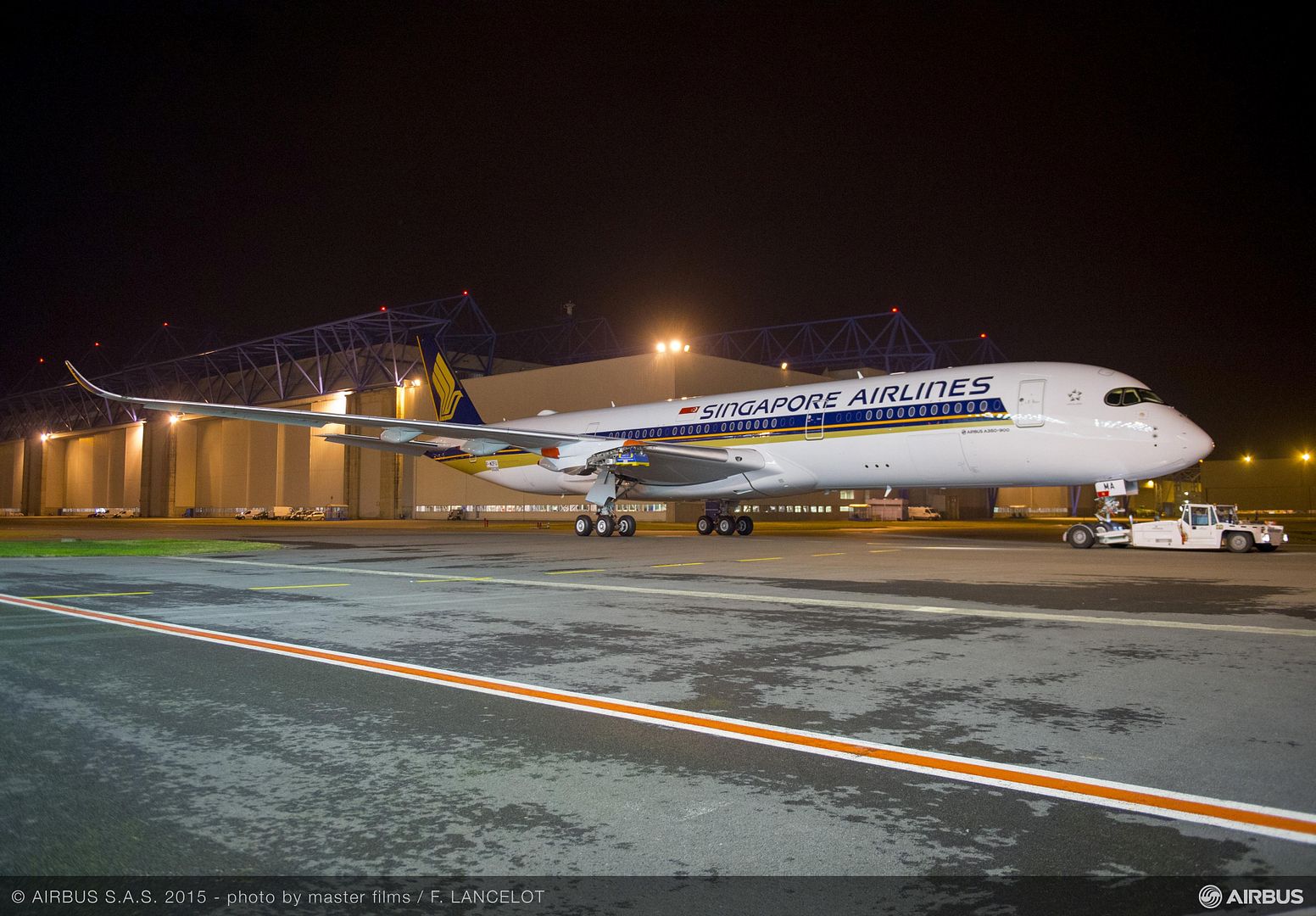
Two U.S. Air Force A-10 Warthogs, assigned to the 163rd Expeditionary Fighter Squadron, release flares after receiving fuel from a KC-135 Stratotanker, 340th Expeditionary Aerial Refueling Squadron, over Southwest Asia, Oct. 13, 2015. Coalition forces fly daily missions in support of Operation Inherent Resolve. (U.S. Air Force photo by Senior Airman Taylor Queen/Released)
-
10 years agoThu Oct 15 2015, 03:56pm
 Main AdminORLANDO, Fla., Oct. 15, 2015 ? Lockheed Martin (NYSE: LMT) has received a $305.4 million contract from the U.S. Air Force for continued production of the Joint Air-to-Surface Standoff Missile (JASSM) and its Extended Range (ER) version.
Main AdminORLANDO, Fla., Oct. 15, 2015 ? Lockheed Martin (NYSE: LMT) has received a $305.4 million contract from the U.S. Air Force for continued production of the Joint Air-to-Surface Standoff Missile (JASSM) and its Extended Range (ER) version.
The Lot 13 contract includes 140 baseline JASSMs for U.S. and international partners, 140 JASSM-ER missiles, data, tooling and test equipment. The Lot 13 award represents the largest JASSM-ER order to date and brings total missiles under contract to more than 2,300.
?JASSM? and JASSM-ER have an important role in the United States? and its allied partners? long-term strategic defense plans,? said Jason Denney, program director of long-range strike systems at Lockheed Martin Missiles and Fire Control. ?The missiles delivered under Lot 13 will provide an effective and more affordable capability against Anti-Access/Area Denial threats, thus providing a strategic deterrent for U.S. and international warfighters.?
The contract represents the fifth production lot for JASSM-ER, which received full-rate production approval last year. Recent program milestones include a Foreign Military Sales contract to integrate JASSM onto Poland?s F-16C/D aircraft and an additional contract in support of F/A-18C/D aircraft integration for Finland.
Armed with a penetrating blast-fragmentation warhead, both missiles can be used in all weather conditions. They share the same powerful capabilities and stealth characteristics, though JASSM-ER has more than two-and-a-half times the range of JASSM for greater standoff range. These 2,000-pound cruise missiles employ an infrared seeker and enhanced digital anti-jam GPS receiver to dial into specific points on targets.
Effective against high-value, well-fortified, fixed and relocatable targets, JASSM is integrated on the U.S. Air Force?s B-1B, B-2, B-52, F-16 and F-15E. The B-1B also carries JASSM-ER. Internationally, JASSM is carried on the F/A-18A/B and the F-18C/D aircraft.
Produced at the company?s manufacturing facility in Troy, Alabama, more than 1,700 JASSMs have been delivered.
14/10/15
On a very wet day in Somerset, the first of seven next-generation Merlins which will carry Royal Marines into battle arrives at its new home.
This is Merlin iMk3 ? ?i? for interim ? better suited to supporting the green berets on amphibious operations than the ?basic? Mk3.
The Merlin is taking over from the venerable Sea King as the workhorse of the Commando Helicopter Force.
A big step forward from its predecessor (it?s 30 years more modern), battlefield Merlin Mk3 ? which has been transferred to the Fleet Air Arm from the RAF ? prefers operations over land than sea, whereas the Royal Marines operate in both environments.
The new helicopter requires new ways of thinking and working ? which is why 845 Naval Air Squadron left their base at Yeovilton behind to head to the desert to train with 3 Commando Brigade whose marines blasted their way through the live-fire exercise area at Twentynine Palms.A couple of weeks ago.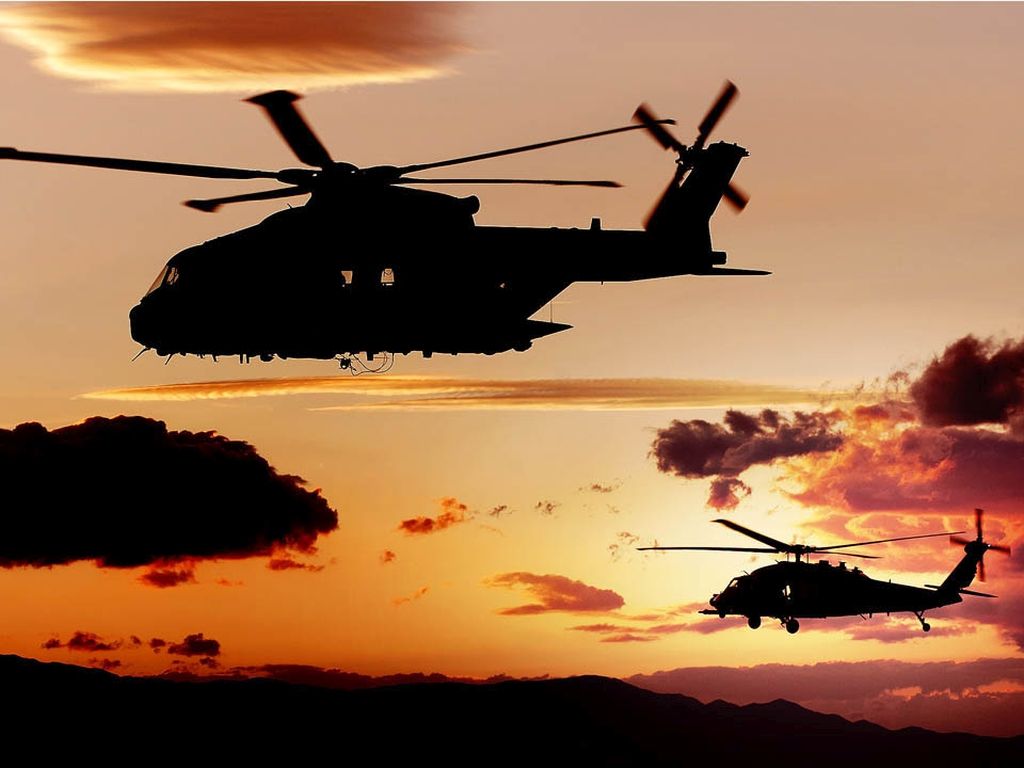
US Airways will all but slip into airline history when American Airlines combines the two carriers? reservations systems on 17 October.
All of the combined carrier?s flights will be operated by American and carry American flight numbers from Saturday, with the last US Airways flight scheduled to land in Philadelphia from San Francisco a little after 06:00 local time that morning.
Signage at more than 200 airports already says American, says Kerry Philipovitch, senior vice-president of customer experience at the Fort Worth, Texas-based carrier, during a media call earlier this week. Most of the work left for the night of 16 October will involve simply swapping the US Airways name for the American name.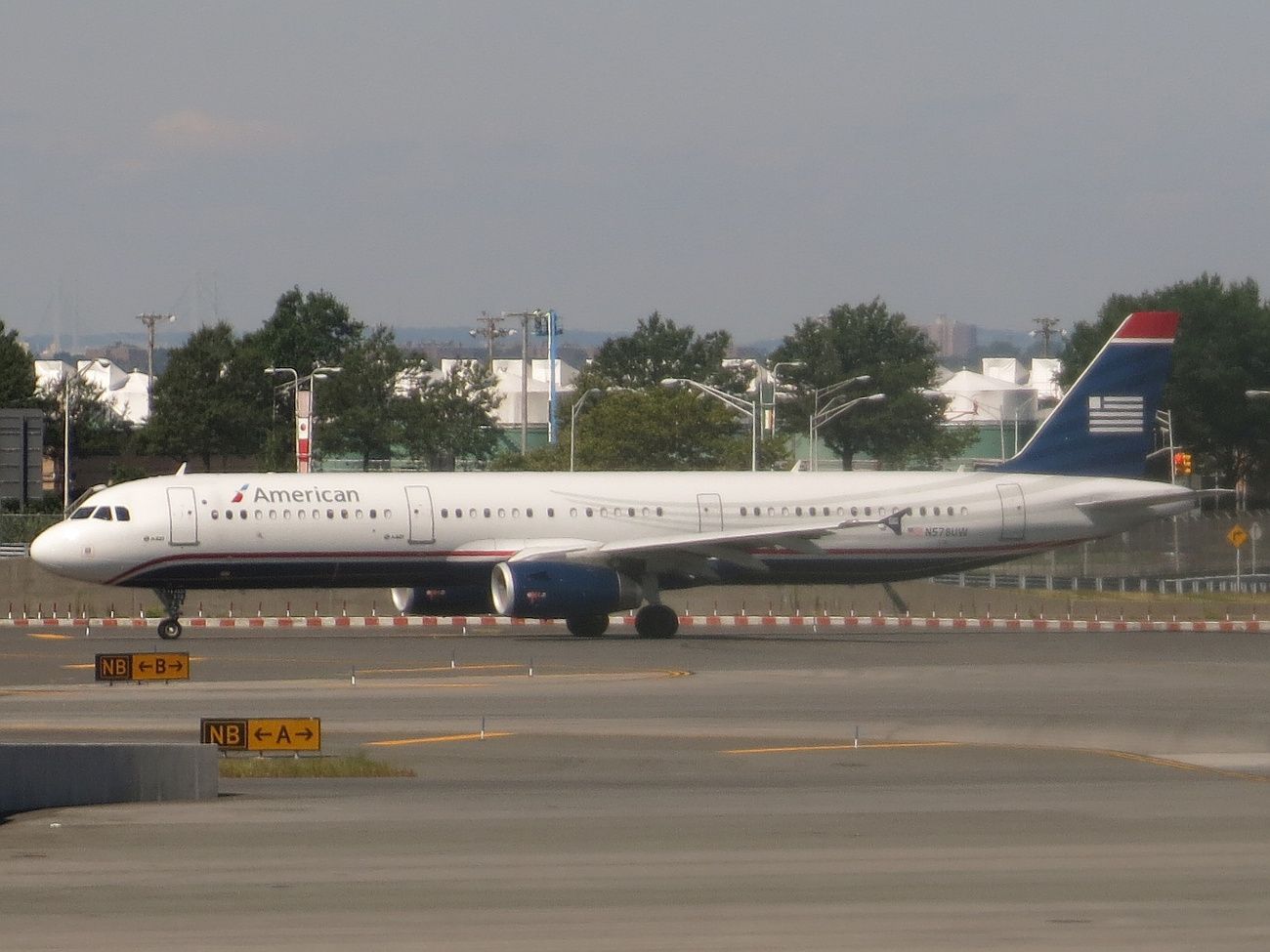
-
10 years agoFri Oct 16 2015, 06:26pm
 Main Admin16 October 2015
Main Admin16 October 2015
Tactical Air Force Wing 51 ?Immelmann? ? named in honour of WWI German flying ace Max Immelmann ? is deployed to North Yorkshire as part of Exercise Joint Warrior, a major NATO exercise in the UK, which finished on 15 October. Joint Warrior is one of the largest tri-service and multinational exercises of its kind in Europe, providing high quality coordinated training at the tactical level for all three UK Armed Services and numerous units from invited allied nations.
It has proven to be the perfect opportunity for the German aircrew to be assessed on their full operational capability following a reorganisation of the German Air Force, in which the role of Tactical Air Force Wing 51 became tactical reconnaissance. Lieutenant Colonel Christian Lienemann, Commanding Officer, said: ?We have mainly been working with RAF Spadeadam in the suppression of surface to air missiles. We have also worked with Forward Air Controllers from several nations and done some low level flying.?
Joint Warrior has proven to be a timely opportunity for the squadron?s aircrew to train in a realistic multi-national environment. Lt Col Lienemann said: ?All of the aircrew are going through their tactical evaluations so this suits us very well. It has been quite a challenge for some of the younger guys. We are all working to NATO standards and aircrew need to speak English to a certain level ? which makes it much easier to exchange information.?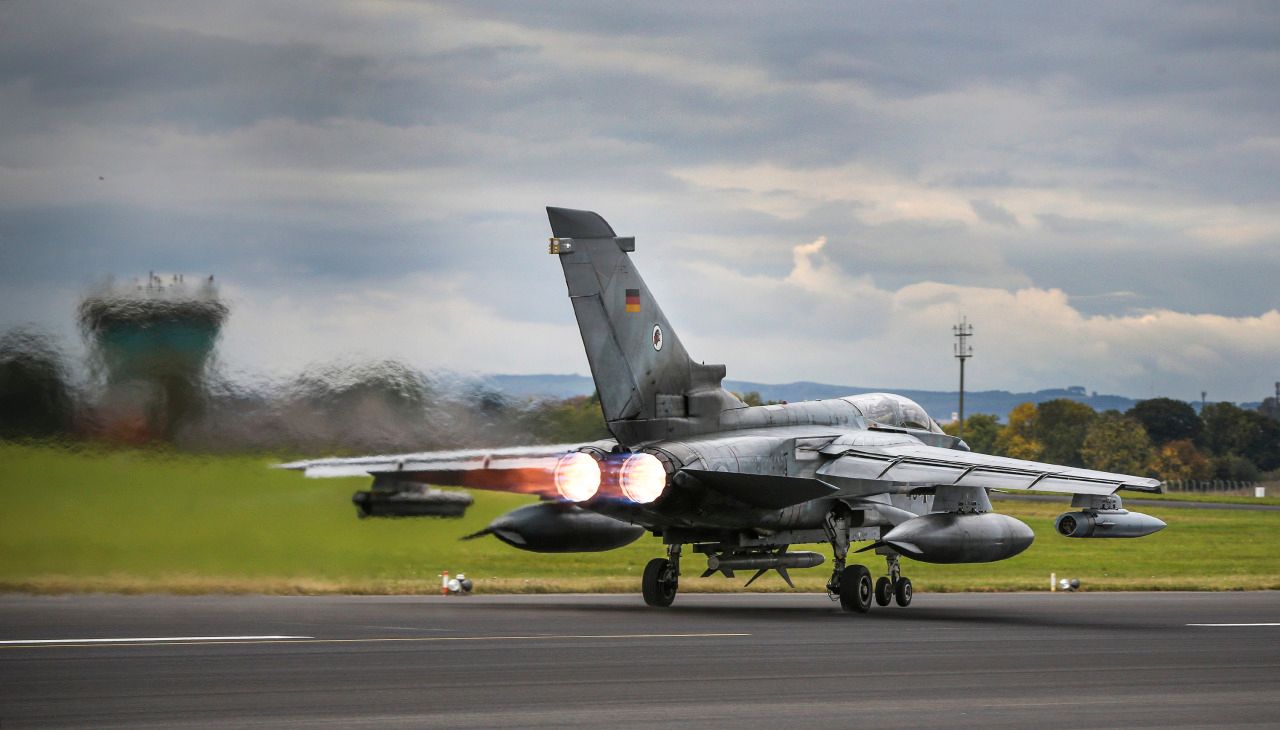
The German contingent at RAF Leeming is sizeable, with 139 aircrew, engineers and support personnel deployed to enable smooth running over the two-week period. The squadron has even set up its own coffee shop to ensure a warm drink and food are available to those working away from the dining facilities or through meal times. Lt Col Lienemann said: ?We did a site survey a few months in advance to find out what we would need. We are actually all located much closer together here than we would be at home, which is good for exchanging information and understanding roles.?
Tactical Air Force Wing 51 ?Immelmann? deploys on exercises several times a year, and Joint Warrior has proven very successful so far. Lt Col Lienemann said: ?It?s very easy for us to come to the UK because everyone is very professional. The exercise control staff had prepared everything very well so we have had a full table of flying and good exchange of information.?
RAF Leeming?s Station Commander, Group Captain David Bradshaw, said: ?It?s always a great pleasure to welcome international visitors to RAF Leeming, particularly our long-term allies from the German Air Force with whom we train on a regular basis.
?RAF Leeming is an excellent location from which to launch Exercise Joint Warrior missions, with easy access to high quality training areas such as the RAF Spadeadam Electronic Warfare Range in Cumbria and support available from 100 Squadron, our resident Hawk aggressor unit. The simultaneous detachment of RAF Typhoons to Leeming has made for a very busy two-week period and I would like to thank the local community for their continued understanding and support.?
Editor: Lynn Dunne
Photographs: Cpl Oldfield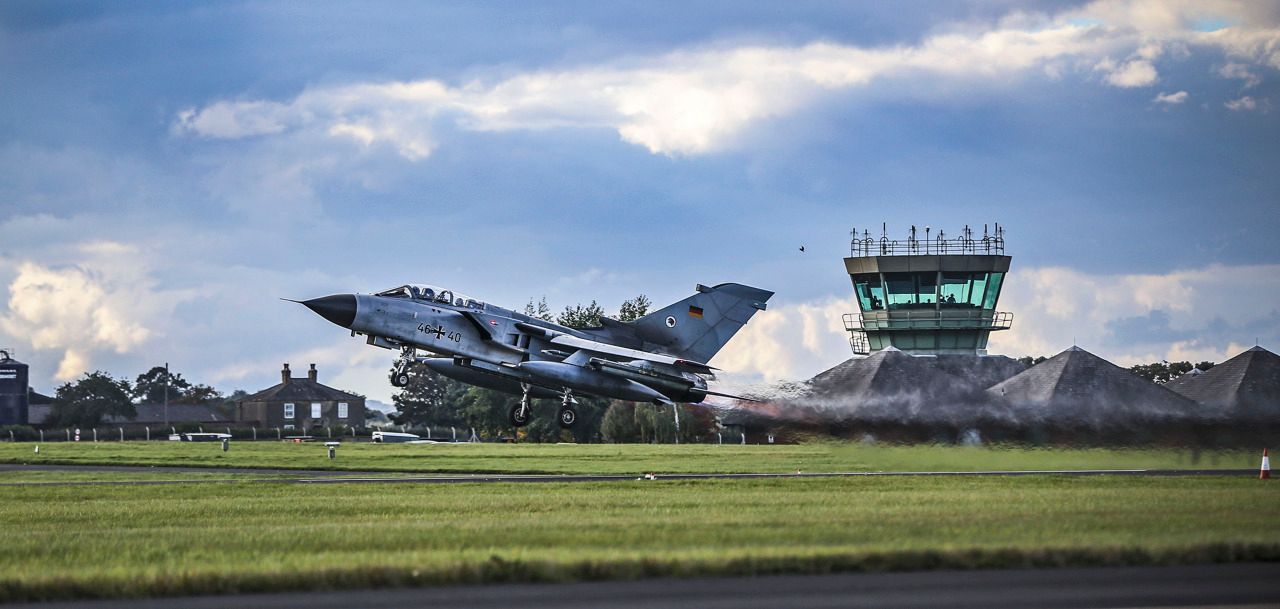
Air Force conducts gunnery at Evans Head Air Weapons Range
Royal Australian Air Force F/A-18F Super Hornet aircraft will conduct air-to-ground gunnery operations at Evans Head Air Weapons Range on weekdays only from 19 October to 30 October inclusive.
The RAAF Base Amberley Super Hornets will conduct strafing runs from 10.30am as agreed with the Evans Head Air Weapons Range Community Advisory Panel in early June 2015.
Officer Commanding 82WG Group Captain Michael Gray said Air Force held discussions with the group regarding the importance of the change as it enabled more efficient operations.
?Pilots can conduct two waves per day, as opposed to only one. This is a much more efficient use of aircraft and personnel time.
?It should also mean we will close the range for air-to-ground gunnery fewer days each year," GPCAPT Gray said.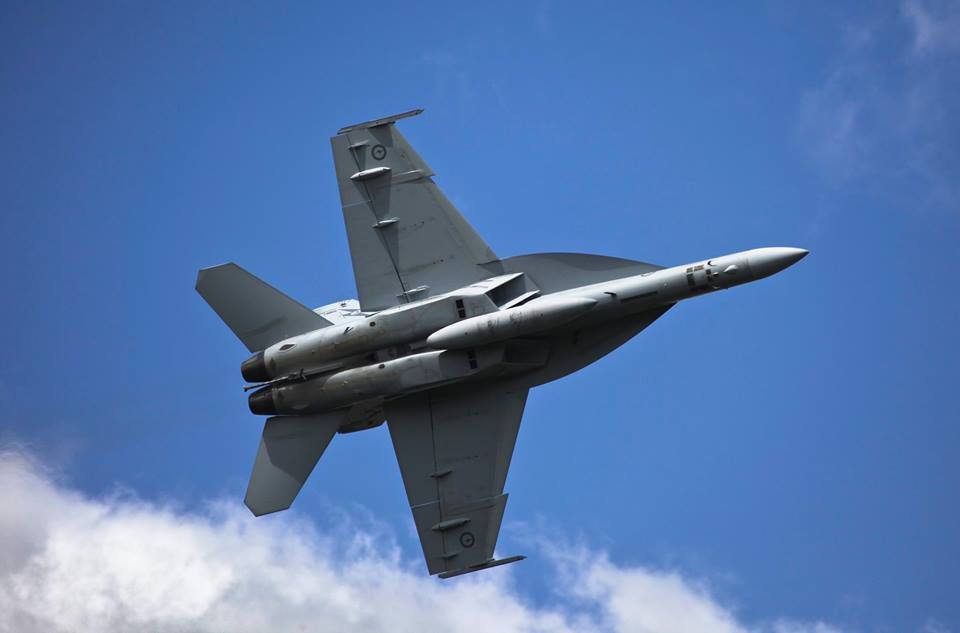
Source: TASS Defence; published Oct 16, 2015
MOSCOW --- The combat operation of the Russian Air and Space Force to destroy terrorist targets in Syria is in its third week. The sortie rate of the Russian aircraft has diminished owing to an active offensive of the Syrian Army. Russian Defense Ministry Spokesman Maj.-Gen. Igor Konashenkov told journalists on Friday.
According to him, the Russian pilots operating in Syria have logged 33 sorties over the past 24 hours, flown against 32 targets presented by the Islamic State (IS) terrorist group compared to 41 sorties to attack 40 targets on October 13-14.
"This is because the forward edge of the battle area is fluid owing to the aggressive advance of the Syrian Armed Forces," Konashenkov said. Last week, Syrian General Staff Chief Gen. Ali Ayub announced a large-scale offensive of the Syrian Armed Forces. The latter is reported to have made progress in several areas.
Meanwhile, Russian aircraft has destroyed a well-camouflaged artillery battery in Hama Governorate, a militants-seized Osa air defense missile system near Damascus, an IS command post in Aleppo Governorate and an improvised explosive device workshop in Idlib Governorate.
IS militants have started a retreat in Syria, prompting the Russian air task force to ramp up reconnaissance sorties, Konashenkov said.
"The militants are retreating, trying to assume new positions and modifying their logistic routes on the hoof," Konashenkov said.
According to the general, Russian intelligence, surveillance and reconnaissance assets have noticed these changes, and the intelligence both gathered by Russians and supplied by the information center in Baghdad is being processed and analyzed.
"Certainly, we have increased the number of manned and unmanned reconnaissance sorties to check out the intel," he added.
The Russian air task force attacked 475 targets on 543 sorties during the first two weeks of its military operation in Syria (September 30 - October 14). Of them, 146 sorties struck 91 targets between September 30 and October 7 (daily sortie rate averaged 21) and 397 sorties (the number is approximate because the Defense Ministry did not provide data for the October 10-11 sorties) hit 384 targets from October 8-14 (average daily sortie rate - 56).
According to Konashenkov, the Russian warplanes handled the following missions between September 30 and October 15:
-- September 30 - October 1: 28 - 12 targets;
-- October 1-2: 18 sorties - 12 targets;
-- October 2-3: over 20 sorties - nine targets;
-- October 3-4: 20 sorties - 10 targets;
-- October 4-5: 25 sorties - nine targets;
-- October 5-6: 15 sorties - 10 targets;
-- October 6-7: 20 sorties - 12 targets;
-- October 7-8: 22 sorties - 27 targets;
-- October 8-9: 67 sorties - 60 targets;
-- October 9-10: 64 sorties - 55 targets;
-- October 10-11: attacks of 63 targets;
-- October 11-12: 55 sorties - 53 targets;
-- October 12-13: 88 sorties - 86 targets:
-- October 13-14: 41 sorties - 40 targets:
-- October 14-15: 33 sorties - 32 targets.
The Russian Federation launched the operation against Islamic State militants on September 30 by request of Syrian President Bashar al-Assad.
The Russian air task force comprises more than 50 combat planes and helicopters, including Sukhoi Su-34 (NATO reporting name Fullback) multirole bombers, heavily upgraded Su-24M (Fencer) bombers and Su-25 (Frogfoot) attack aircraft, Su-30SM (Flanker) multirole fighters and Mil Mi-8 (Hip) and Mi-24 (Hind) helicopters.
In addition to the Russian Air and Space Force, the Russian Navy is taking part in the operation. On the night of October 7, Caspian Flotilla ships launched a mass attack on IS targets in Syria from the Caspian Sea, using sea-launched cruise missiles of the Kalibr-NK system.
WATERS SOUTH OF JAPAN (Oct. 16, 2015) An F/A-18F Super Hornet from the ?Diamondbacks? of Strike Fighter Squadron (VFA) 102 prepares to launch from flight deck of the U.S. Navy's only forward-deployed aircraft carrier USS Ronald Reagan (CVN 76). Ronald Reagan and its embarked air wing, Carrier Air Wing (CVW) 5, provide a combat-ready force that protects and defends the collective maritime interests of its allies and partners in the Indo-Asia-Pacific region. (U.S. Navy photo by Mass Communication Specialist 3rd Class Nathan Burke/Released)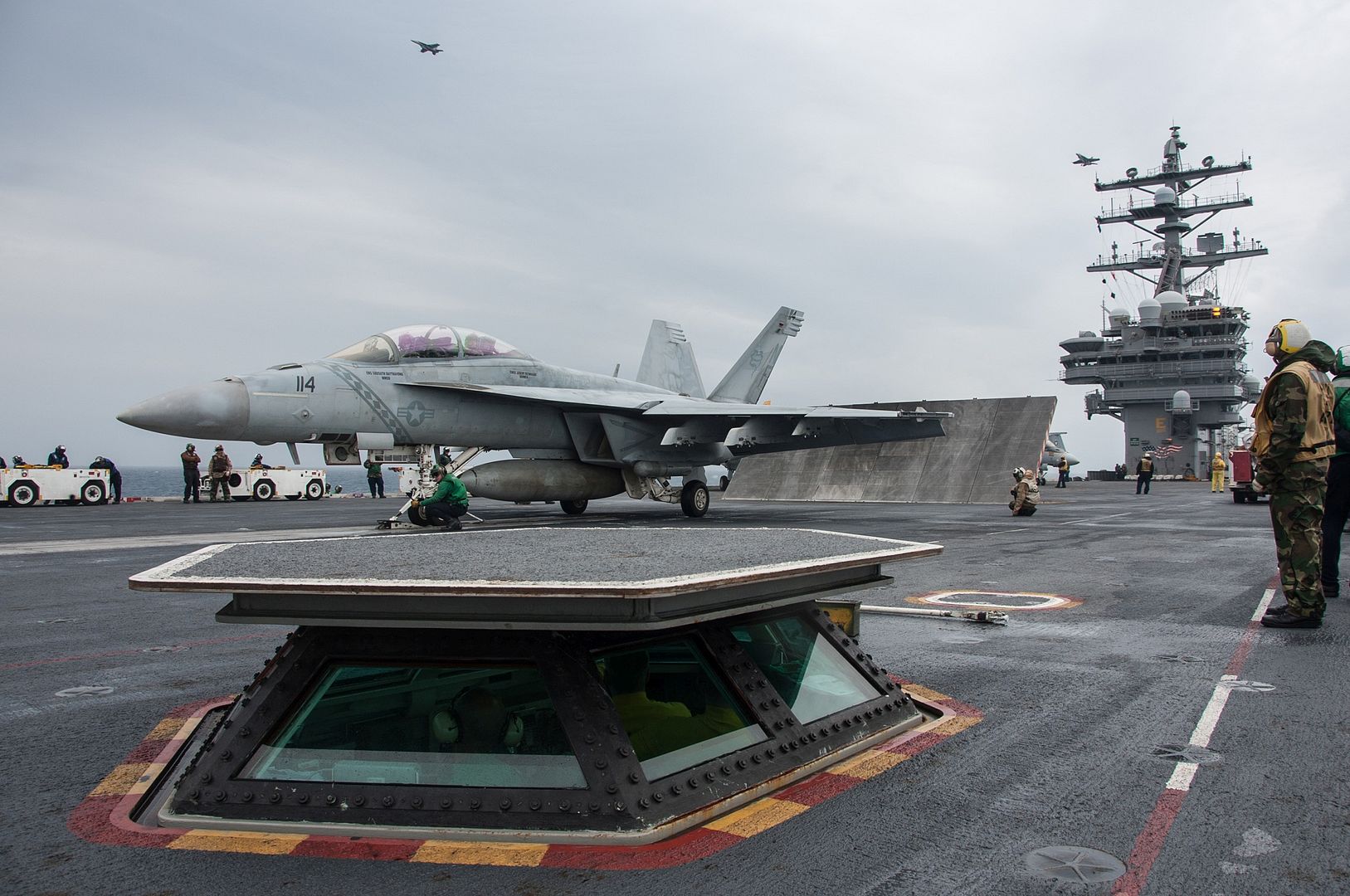
The US Air National Guard?s 199th Fighter Squadron has claimed a new record for having generated 62 sorties during a single day, using only 12 of its 18 aircraft, for an average of over 5 sorties per aircraft.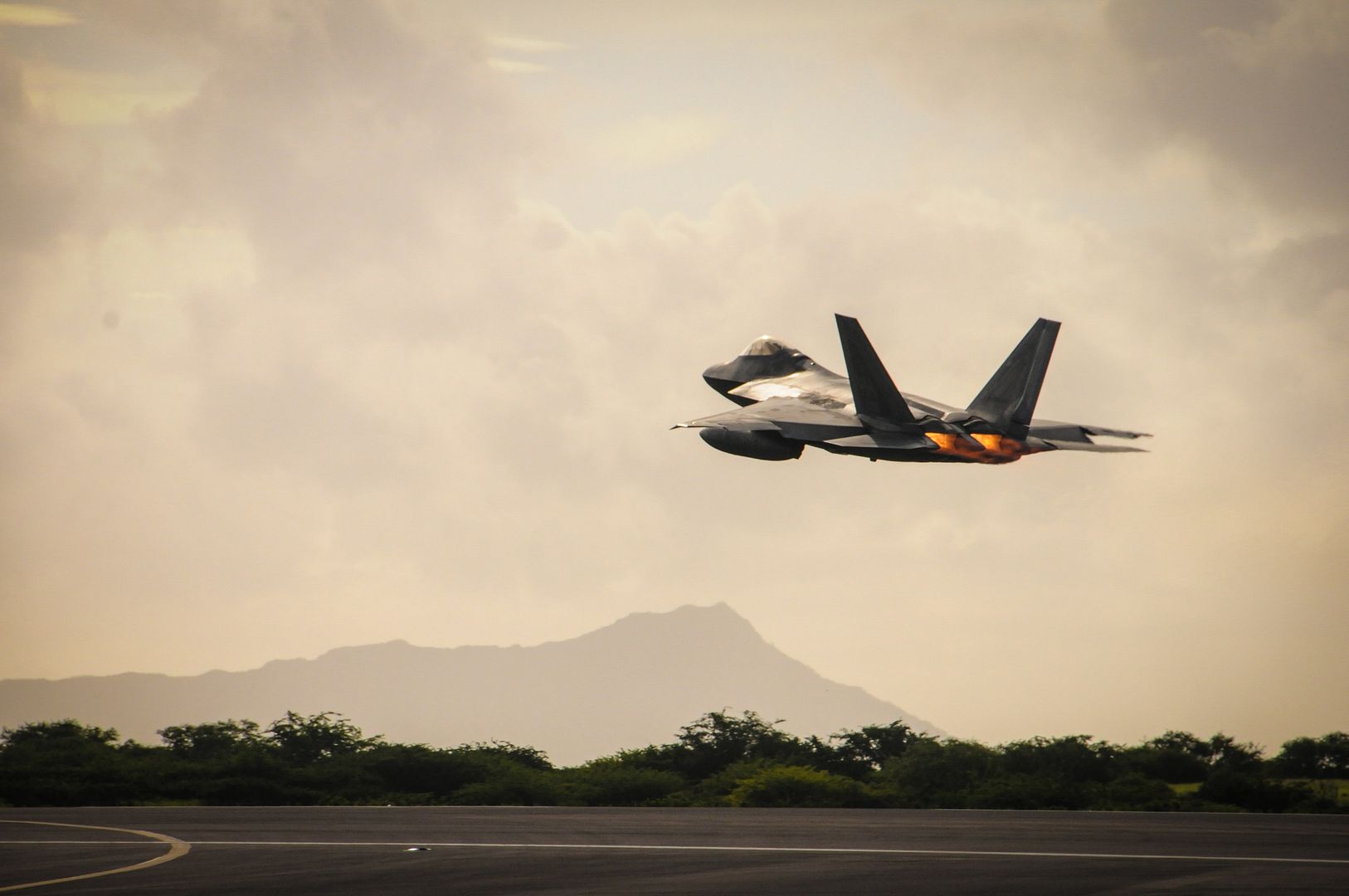
SUNNYVALE, Calif., Oct. 15, 2015 ? Because enemy aircraft and missiles can come from anywhere, a laser weapon system on a military aircraft will need to be able to fire in any direction. However, the laws of physics say that a laser only can engage targets in front of an aircraft that is travelling close to the speed of sound ? unless atmospheric turbulence can be counteracted. That?s exactly what Lockheed Martin (NYSE: LMT) has done in developing a prototype laser turret for the Defense Advanced Research Projects Agency (DARPA) and the Air Force Research Laboratory (AFRL), paving the way for laser weapon systems on tactical aircraft.
The Aero-adaptive Aero-optic Beam Control (ABC) turret is the first turret ever to demonstrate a 360-degree field of regard for laser weapon systems on an aircraft flying near the speed of sound. Its performance has been verified in nearly 60 flight tests conducted in 2014 and 2015 using a business jet as a low-cost flying test bed. As the aircraft travelled at jet cruise speeds, a low-power laser beam was fired through the turret?s optical window to measure and verify successful performance in all directions.
The design uses the latest aerodynamic and flow-control technology to minimize the impacts of turbulence on a laser beam. An optical compensation system, which uses deformable mirrors, then is used to ensure that the beam can get through the atmosphere to the target. Left unchecked, turbulence would scatter the light particles that make up a laser beam, much like fog diffuses a flashlight beam.
?This advanced turret design will enable tactical aircraft to have the same laser weapon system advantages as ground vehicles and ships,? said Doug Graham, vice president of missile systems and advanced programs, Strategic and Missile Defense Systems, Lockheed Martin Space Systems. ?This is an example of how Lockheed Martin is using a variety of innovative technologies to transform laser devices into integrated weapon systems.?
DARPA and AFRL will use the results of the flight tests in determining future requirements for laser weapon systems on high-speed aircraft and expanding their effectiveness.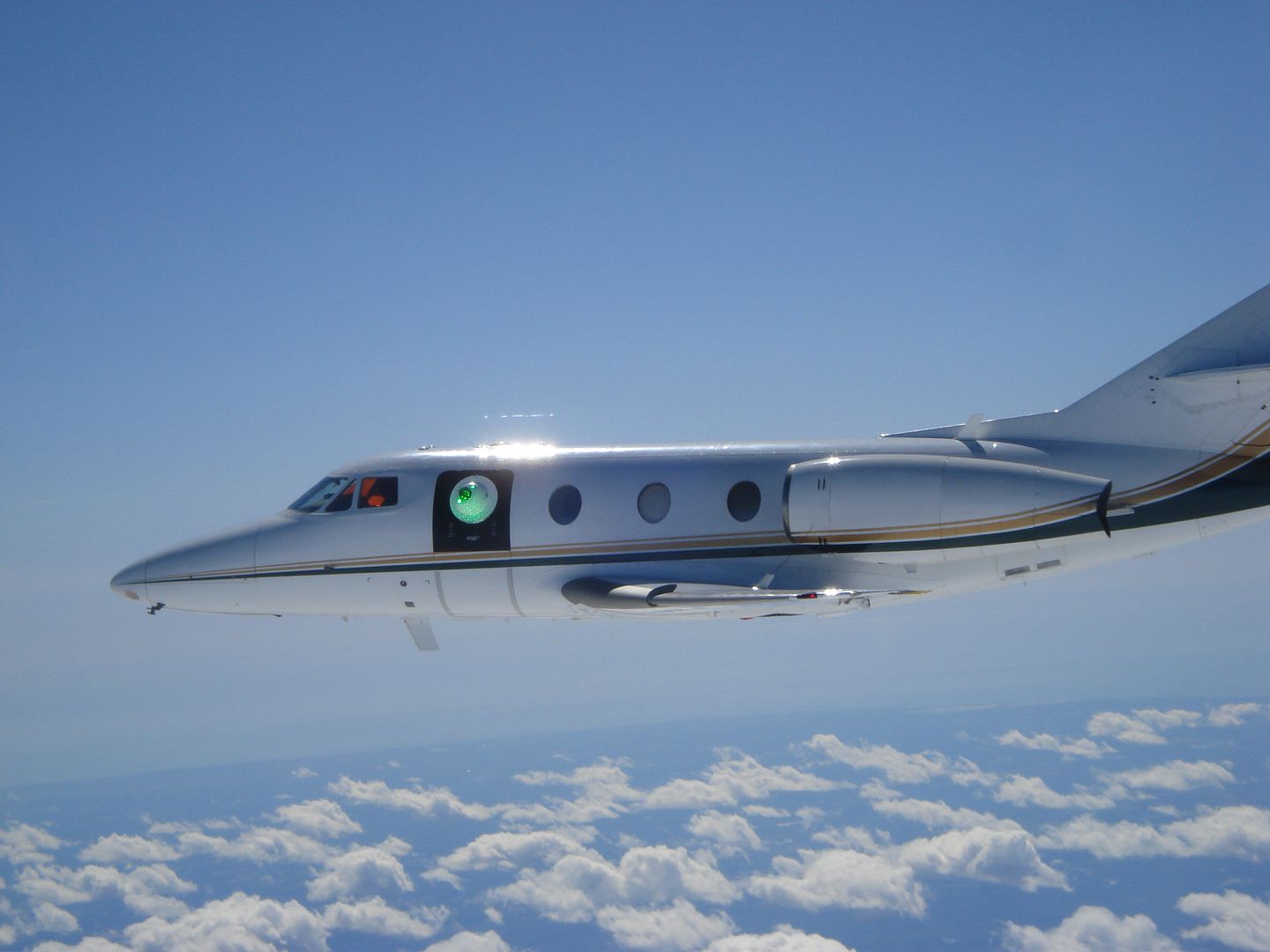
SEATTLE, Oct. 15, 2015 /PRNewswire/ -- Boeing [NYSE:BA] today announced EVA Airways' intent to purchase up to 24 787-10 Dreamliners and two additional 777-300ER (Extended Range) jetliners, which is valued at more than $8 billion at current list prices. EVA Airways will join the 787-10 launch customer team and will be one of the first airlines in the world to introduce the newest member of the 787 Dreamliner family.
Once the deal is finalized, it will be posted on the Boeing Orders and Deliveries website.
"We look forward to welcoming EVA Airways as Boeing's newest member of the 787-10 Dreamliner launch customer group," said Boeing Commercial Airplanes President and CEO Ray Conner. "EVA Airways has been a valued Boeing customer over the past few decades and we are honored that they continue to introduce new Boeing widebody airplanes into their growing world-class fleet."
EVA Airways continues to modernize its long-haul fleet to replace aging aircraft and these new airplanes will allow the airline to expand into new markets, particularly in Southeast Asia, Oceania and North America.
The airline currently operates more than 37 Boeing airplanes in its fleet, including 21 777-300ERs. The 777-300ER is the backbone of EVA Airways' growing fleet and the carrier is the world's 8th largest 777-300ER operator and 4th largest in Asia.
With its intent to purchase two additional 777-300ERs as part of this deal, EVA Airways will have unfilled orders for 15 777-300ERs and five 777 Freighters, as well as 24 787-10s ? both direct purchased and leased.
The 787-10 will be the third and longest member of the super-efficient 787 family. With its greater passenger and cargo capacity, robust range and passenger-pleasing features, the 787-10 will complement EVA's Boeing widebody fleet while setting a new benchmark for fuel efficiency and operating economics. The 787-10 will be 25 percent better in fuel and emissions than the airplanes it replaces and more than 10 percent better than anything offered by the competition for the future.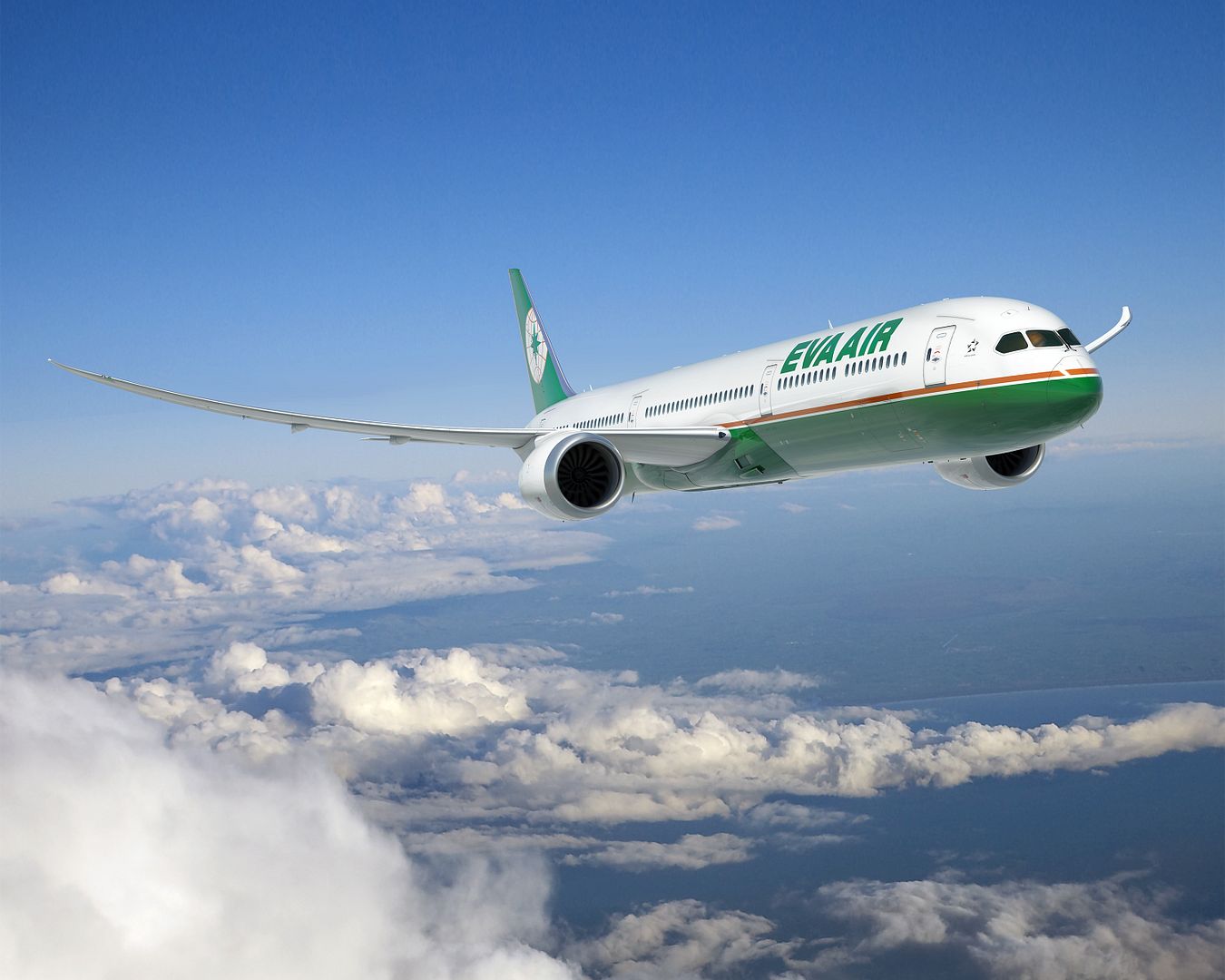
F-15E Strike Eagles assigned to the 494th Fighter Squadron are welcomed home from deployment at Royal Air Force Lakenheath, England, Oct. 8, 2015. While deployed, the Panthers flew 1,651 sorties and dropped more than 1,700 bombs in support of U.S. Central Command operations. (U.S. Air Force photo's by Senior Airman Trevor T. McBride/Released)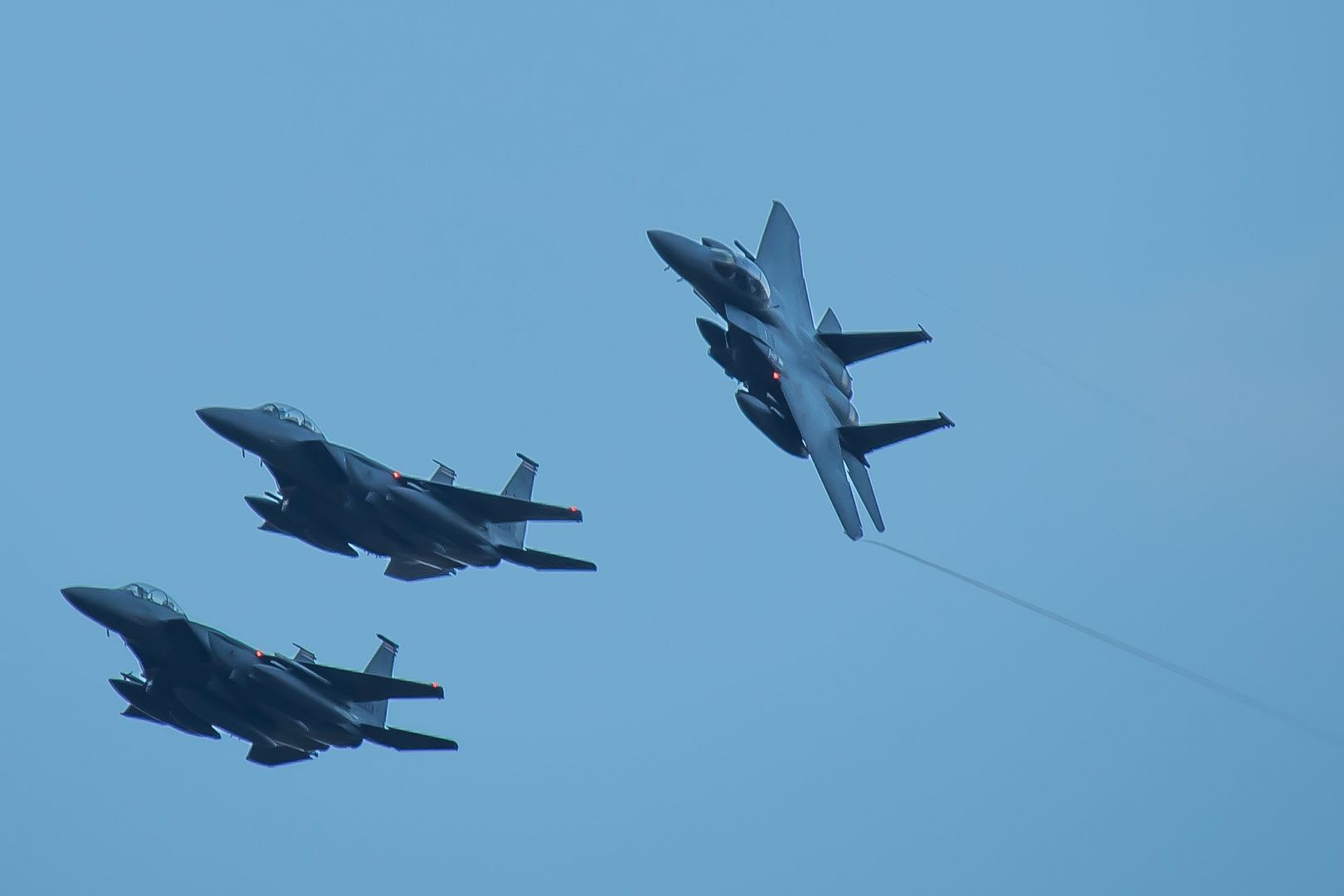

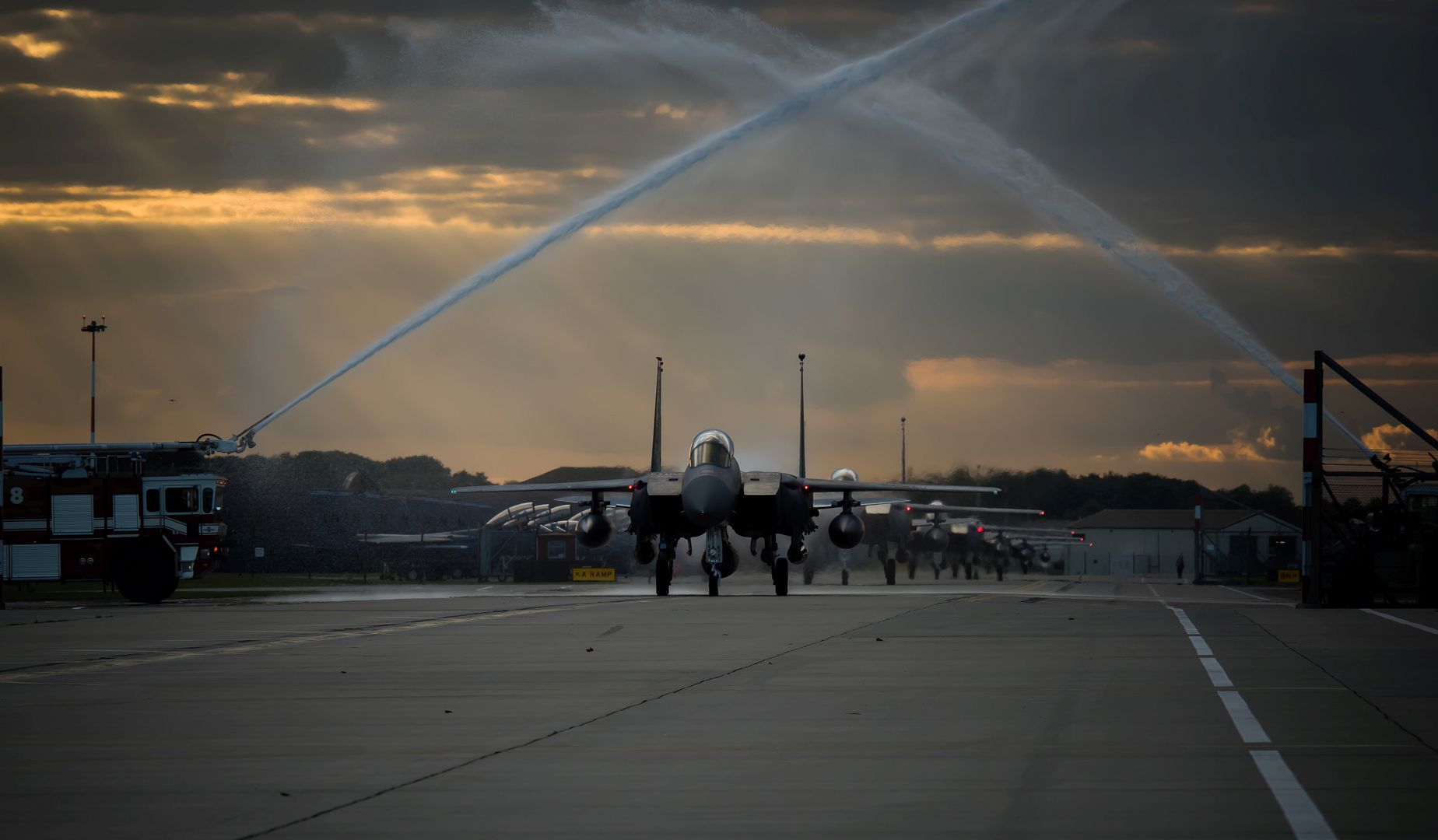
-
10 years agoMon Oct 19 2015, 06:50pm
 Main AdminThe "Wall of Fire" is set off behind the U.S. Navy Blue Angel demonstration team during the 2015 Kaneohe Bay Air Show aboard Marine Corps Base Hawaii, Oct. 16, 2015. The Mission of MCB Hawaii is to provide facilities, programs and services in direct support of units, individuals and families in order to enhance and sustain combat readiness for all operating forces and tenant organizations. (U.S. Marine Corps photo by Lance Cpl. Julian Temblador)
Main AdminThe "Wall of Fire" is set off behind the U.S. Navy Blue Angel demonstration team during the 2015 Kaneohe Bay Air Show aboard Marine Corps Base Hawaii, Oct. 16, 2015. The Mission of MCB Hawaii is to provide facilities, programs and services in direct support of units, individuals and families in order to enhance and sustain combat readiness for all operating forces and tenant organizations. (U.S. Marine Corps photo by Lance Cpl. Julian Temblador)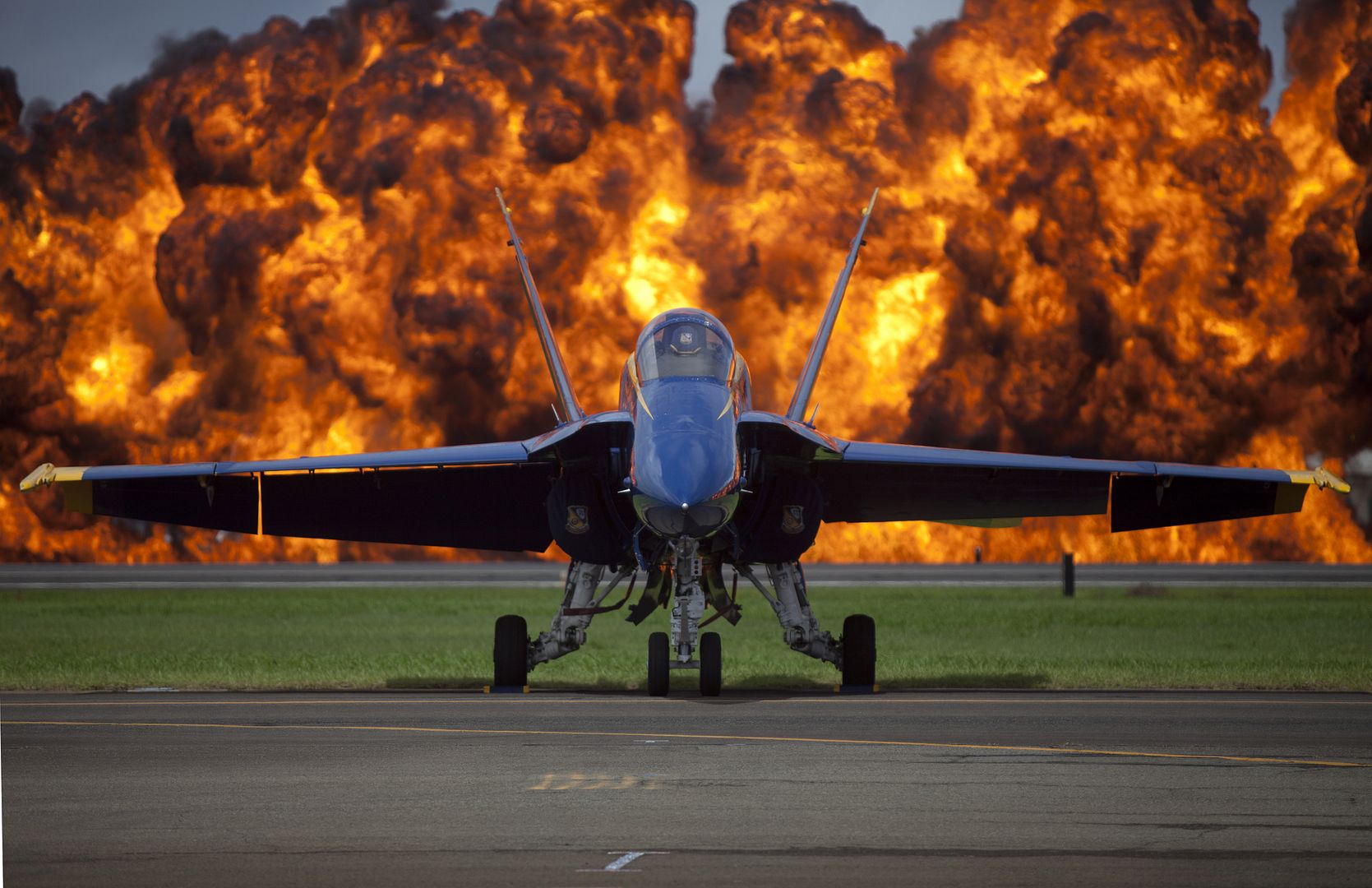
Lt. Cmdr. Mark Tedrow, pilot number five with the U.S. Navy Flight Demonstration Squadron, the Blue Angels, performs aerial acrobatics during the 2015 Kaneohe Bay Air Show and Open House aboard Marine Corps Base Hawaii, Oct. 18, 2015. This year?s theme for the air show was ?Joining Forces with the Community,? which hosted an array of acrobatic aerial performances by civilian performers, and military drills and demonstrations by the U.S. Navy, Marine Corps, Army, Air Force and Coast Guard. (U.S. Marine Corps photo by Cpl. Brittney Vito)
19 October 2015
The newest Airbus A400M to be delivered to the Royal Air Force visited number 22 Squadron Royal Malaysian Air Force at Subang on Saturday 17th October.
The crew and engineers of 70 Squadron and 24 Squadron based at RAF Brize Norton in Oxfordshire, UK visited Subang to strengthen the ties between the two countries. Both the UK and Malaysian Air Forces operate the A400M Atlas transport aircraft and this trip provided an opportunity to share their experiences and knowledge of the airframe and its systems.
RAF personnel were met by the Base Commander Colonel Masro Kaliwon, and were treated to some Malaysian hospitality. The crews chatted over coffee about training on the A400M and future aspirations for the highly capable and sophisticated aircraft.
Royal Air Force Airbus A400M Capt Erid Rahim RMAF, who facilitated the successful visit, expressed how he was pleased to see the Royal Air Force Aircraft in Subang. The A400M is the newest aircraft to come into service in the RAF, and will replace the C-130 Hercules in the Tactical and Strategic delivery of equipment and people. Capt Rahim said: ?I am very much looking forward to working on the new aircraft, with its state of the art technologies.?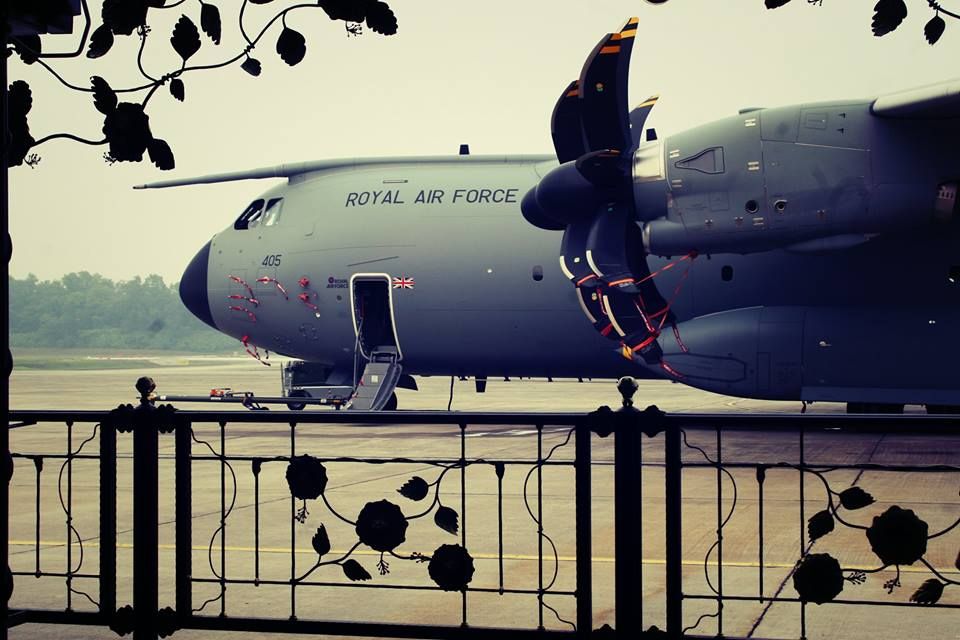
This is the first time the UK A400M has been operated in the Far East, and the liaison proved useful immediately as the humidity is something the UK aircraft and crew had not experienced, but the RMAF were now well versed in operating the aircraft in these conditions.
After refreshments the crew headed outside where Colonel Masro Kaliwon presented Squadron Leader Stu Patten with a framed picture of the Malaysian A400M and four Hawk T200 training aircraft. Colonel Kaliwon said: ?We are very happy to receive the newest Royal Air Force A400M at Subang, it is important to build a relationship between our two countries, now and into the future.? The RMAF currently have one aircraft and will receive a further 3 over the coming years. Colonel Kaliwon added: ?We hope to fly our Malaysian A400M to the UK in the future.? Squadron Leader Stu Patton thanked the Colonel for his hospitality, and echoed his sentiments about building a strong relationship between two countries who operate the same aircraft.
Editor: Flying Officer Abi Bagshaw
A DHC-4 Caribou from No. 38 Squadron conducts Low-Altitude Parachute Extraction System (LAPES) training at RAAF Base Richmond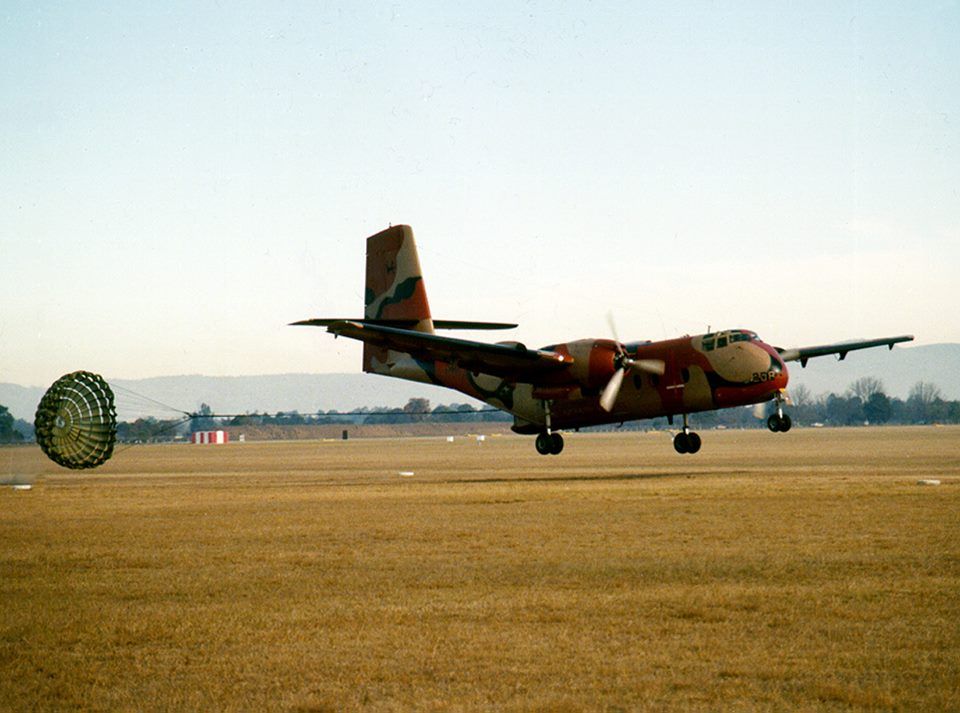
15 October 2015
More than 74 years of continuous Royal Air Force UK search and rescue (SAR) air operations drew to a close this month, as the Service handed over SAR duties to the Maritime & Coastguard Agency and Bristow Helicopters Ltd.
Since their introduction more than 30 years ago, the RAF?s famous yellow Sea Kings and their crews have saved tens of thousands of lives and continued to stand by on duty 24-hours-a-day until 4 October, when the final operational flight landed at Royal Marines Base Chivenor in Devon.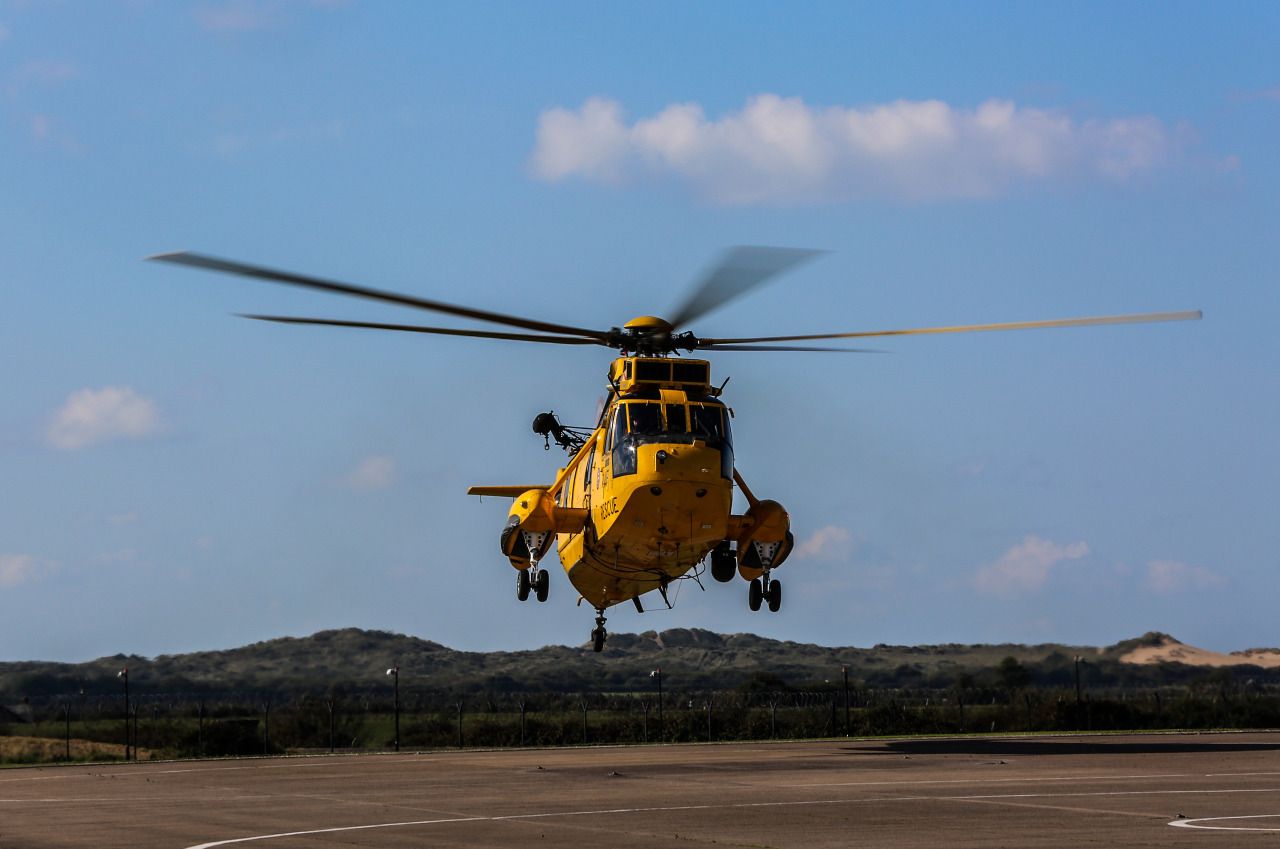
The handover marked the end of more than 74 years of continuous SAR air operations by the RAF in the UK, during which SAR personnel have been awarded six George Medals, more than 50 Air Force Crosses and Medals, and more than 90 Queen?s Commendations for Bravery or Valuable Service in the Air.
Official RAF SAR statistic record-keeping only began in 1983, but since then the RAF?s six SAR units have completed 34,025 callouts and rescued 26,853 persons in distress.
Chivenor was the last SAR base to hand over responsibility to Bristow Helicopters Ltd, which will provide crews and helicopters to maintain SAR duties under Maritime & Coastguard Agency management. The RAF?s final search and rescue air operation took place on 4 October, after Devon & Cornwall Police asked for assistance in taking a 38-year-old-man found unconscious on Ilfracombe Beach to a hospital.
Officer Commanding 22 Squadron Wing Commander ?Sparky? Dunlop said: ?As we commemorate the end of the RAF SAR Force, we reflect on the end of a long tradition of RAF personnel who launched aircraft that safely flew and efficiently searched for, then rescued, those in distress around the clock, 365-days-a-year.?
RAF Search and Rescue Force Commander for the UK Group Captain Steve Bentley said: ?It is with enormous pride that we remember the RAF?s life-saving achievements since rescue operations began in 1941. Thousands of lives have been saved and individuals reunited with their loved ones through rescue missions often flown in the most difficult and extreme conditions.?
While RAF SAR air missions in the UK have come to an end, a small number of Sea King crews will continue to train at Chivenor to prepare them to provide cover for aircrew stationed in the Falkland Islands.
Editor: Simon Mander
Photographs: Sgt Bryden & Cpl Devine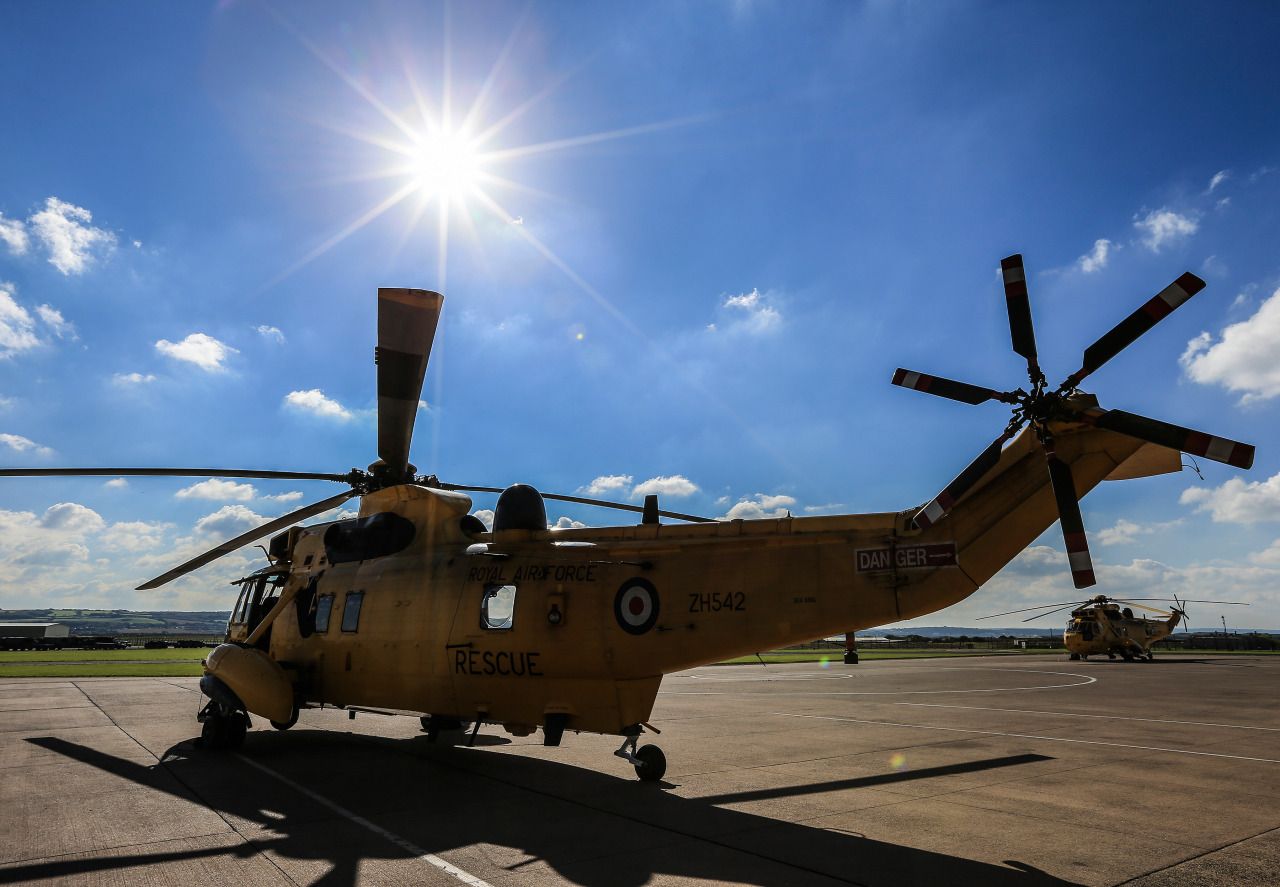

-
10 years ago
 Main AdminPACIFIC OCEAN (Oct. 19, 2015) An F/A-18F Super Hornet from the 'Bounty Hunters' of Strike Fighter Squadron (VFA) 2 launches from the flight deck of aircraft carrier USS George Washington (CVN 73). UNITAS 2015, the U.S. Navy's longest running annual multinational maritime exercise, is part of the Southern Seas deployment planned by U.S. Naval Forces Southern Command/U.S. 4th Fleet. This 56th iteration of UNITAS is conducted in two phases: UNITAS PACIFIC, hosted by Chile, Oct. 13-24, 2015, and UNITAS Atlantic, hosted by Brazil, scheduled for November. (U.S. Navy photo by Mass Communication Specialist 3rd Class Bryan Mai/Released)
Main AdminPACIFIC OCEAN (Oct. 19, 2015) An F/A-18F Super Hornet from the 'Bounty Hunters' of Strike Fighter Squadron (VFA) 2 launches from the flight deck of aircraft carrier USS George Washington (CVN 73). UNITAS 2015, the U.S. Navy's longest running annual multinational maritime exercise, is part of the Southern Seas deployment planned by U.S. Naval Forces Southern Command/U.S. 4th Fleet. This 56th iteration of UNITAS is conducted in two phases: UNITAS PACIFIC, hosted by Chile, Oct. 13-24, 2015, and UNITAS Atlantic, hosted by Brazil, scheduled for November. (U.S. Navy photo by Mass Communication Specialist 3rd Class Bryan Mai/Released)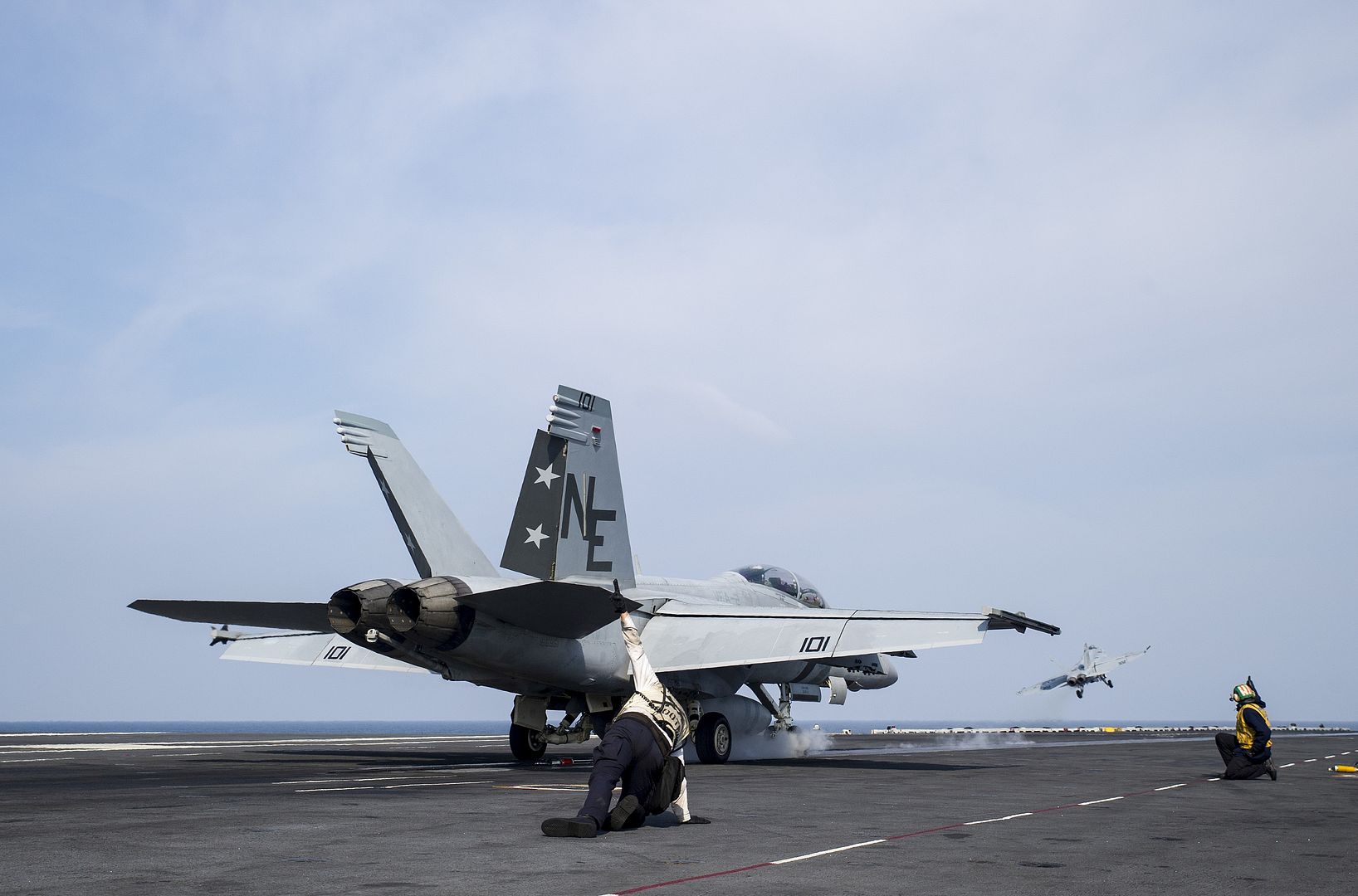
PACIFIC OCEAN (Oct. 19, 2015) An F/A-18E from the 'Golden Dragons' of Strike Fighter Squadron (VFA) 192 performs an arrested landing on the flight deck of aircraft carrier USS George Washington (CVN 73). UNITAS 2015, The U.S. Navy's longest running annual multinational maritime exercise, is part of the Southern Seas deployment planned by U.S. naval Forces Southern/U.S. 4th Fleet. This 56th iteration of UNITAS is conducted in two phases: UNITAS Pacific, hosted by Chile, Oct. 13-24, 2015, and UNITAS Atlantic, hosted by Brazil, scheduled for November. (U.S. Navy photo by Mass Communication Specialist Seaman Clemente A. Lynch/Released)
PACIFIC OCEAN (Oct. 19, 2015) An E-2C Hawkeye from the 'Black Eagles' of Airborne Early Warning Squadron (VAW) 113 launches from the flight deck of aircraft carrier USS George Washington (CVN 73). UNITAS 2015, the U.S. Navy's longest running annual multinational maritime exercise, is part of the Southern Seas deployment planned by U.S. Naval Forces Southern Command/U.S. 4th Fleet. This 56th iteration of UNITAS is conducted in two phases: UNITAS PACIFIC, hosted by Chile, Oct. 13-24, 2015, and UNITAS Atlantic, hosted by Brazil, scheduled for November. (U.S. Navy photo by Mass Communication Specialist 3rd Class Bryan Mai/Released)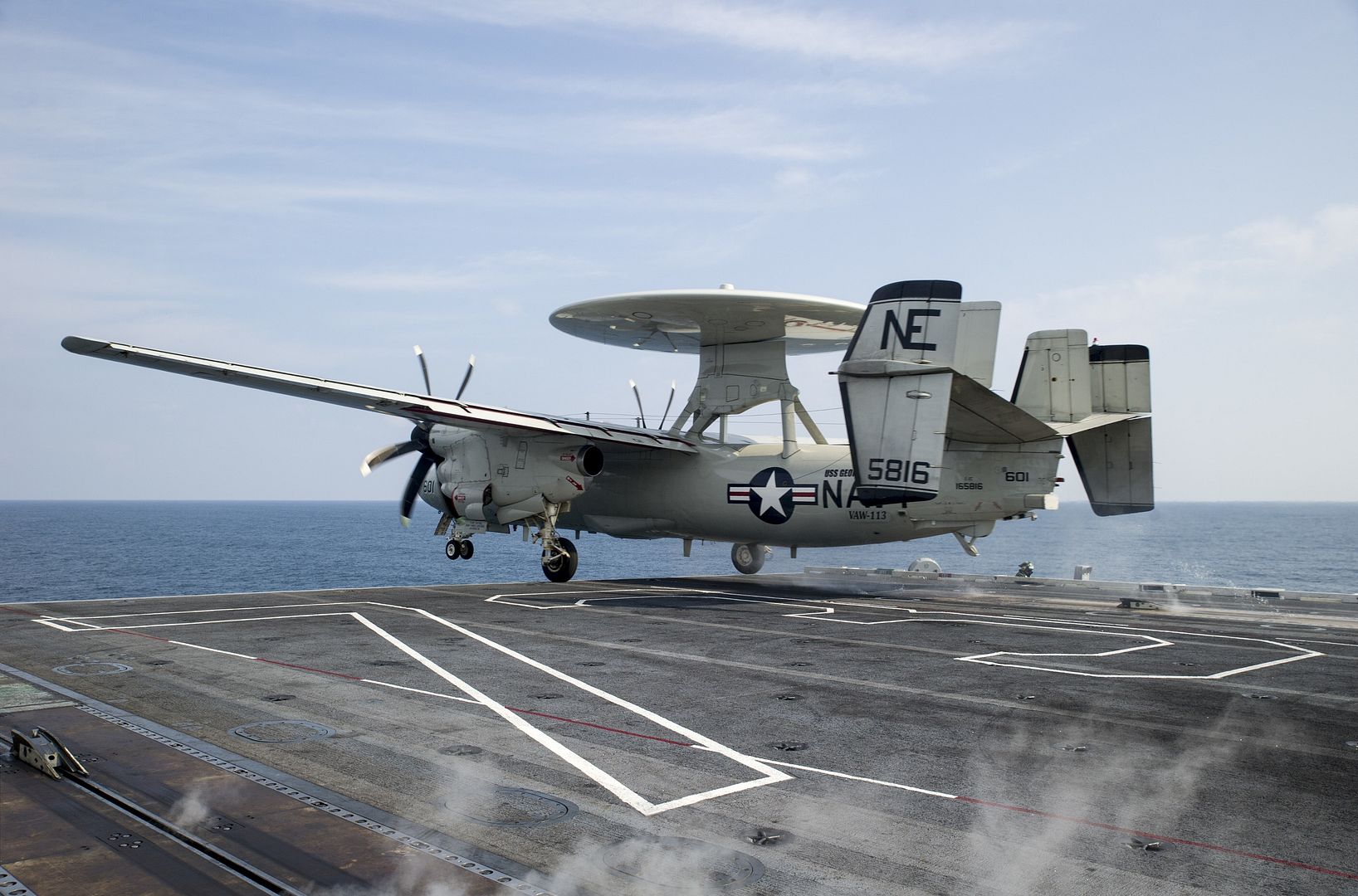
TUCSON, Oct. 19 (UPI) -- An upgrade to AGM-88 High-Speed Anti-Radiation Missiles, the HARM Control Section Modification, has been tested by the U.S. Air Force and Raytheon.
The modification features a new GPS/inertial measurement unit capability and increased resistance to counter-HARM tactics.
Raytheon said in the flight test, an AGM-88F with the modification --was fired by an F-16 against an emitter located outside a pre-planned zone of exclusion while a similar radiating emitter within the zone attempted to lure the missile to the decoy target.
The Harm missile ignored the decoy and successfully impacted where it was supposed to.
"HCSM provides the warfighter an effective, affordable solution that improves the probability of hit, defeats counter-HARM tactics and controls where the missile can and cannot fly," said Mike Jarrett, vice president of Raytheon's Air Warfare Systems.
Tests on the upgrade are continuing. Once completed, the Air Force will make a decision on fielding the new HCSM capability.
The AGM-88 is designed for use against surface-to-air missile radars, early warning radars and radar-directed air defense artillery systems. More than 4,000 HARMs have so far been employed in combat.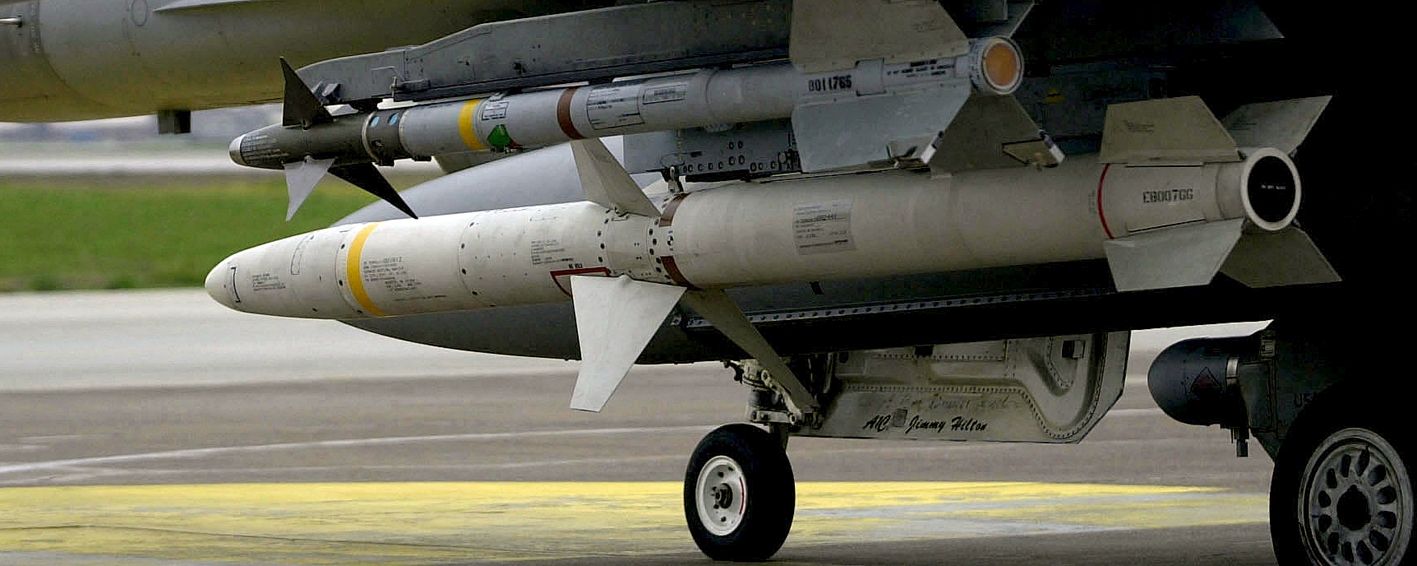
On October 15, 2015, ANTONOV Company included into UKROBORONPROM State Concern and Pratt & Whitney Canada (P&WC) signed the contract on equipment of AN?132D DEMO aircraft with engines. According to the contract terms, two PW150A engines will be delivered in April 2016. AN?132D maiden flight is expected to be ready for demonstration late 2016.
The programme of AN?132 light multi?purpose airplane is realized by ANTONOV Company with participation from King Abdulaziz City for Science and Technology (KACST), Kingdom of Saudi Arabia.
Oleksandr Kotsiuba, the First Vice President of ANTONOV Company, said: ?This event is significant for both the AN?132 programme and aircraft industry of Ukraine as a whole. The global market demand for the AN?132 is estimated as many as 200 units between 2018 to 2025. We are reaching the new level of international partnership and quality of our aircraft. The engine is the airplane?s heart, and we are confident in reliability of the new ANTONOV transport?.
?We are delighted to have been selected by ANTONOV to power its AN?132D aircraft,? says Richard Dussault, Vice President, Marketing, P&WC. ?The PW150A engine is part of the PW100 family of engines, proven workhorses known for their durability and dependability. This is an exciting, high?potential program for both Antonov and P&WC and we look forward to fully developing that potential.?The long term potential for the programme is estimated to be in the order of 400 PW150A engines.
The AN?132 ? intended for short? and medium?haul routes ? will have varied use and can be outfitted with a variety of cabin configurations. The aircraft will have a maximum cruising speed of 500 kilometers per hour and a maximum cruising altitude of 9,000 meters with a maximum payload of 9.2 tonnes. Antonov projects a potential market for the aircraft of 200 units between 2018 and 2025.
The PW100 engine family offers the lowest fuel consumption and carbon emissions in the regional turboprop market and incorporates the latest, proven advanced technologies. Ranging in power from 1,800 shp to more than 5,000 shp, PW100 engines are available in 38 models, offering unsurpassed flexibility and capability for a variety of applications. PW100 engines power aircraft in service with 500+ operators in 130+ countries. More than 8,000 PW100/150 engines have been produced since the family entered service in 1984, accumulating more than 165 million flying hours. PW100 engines have demonstrated their versatility in powering aircraft applications spanning regional airlines, coastal surveillance, firefighting and cargo transport.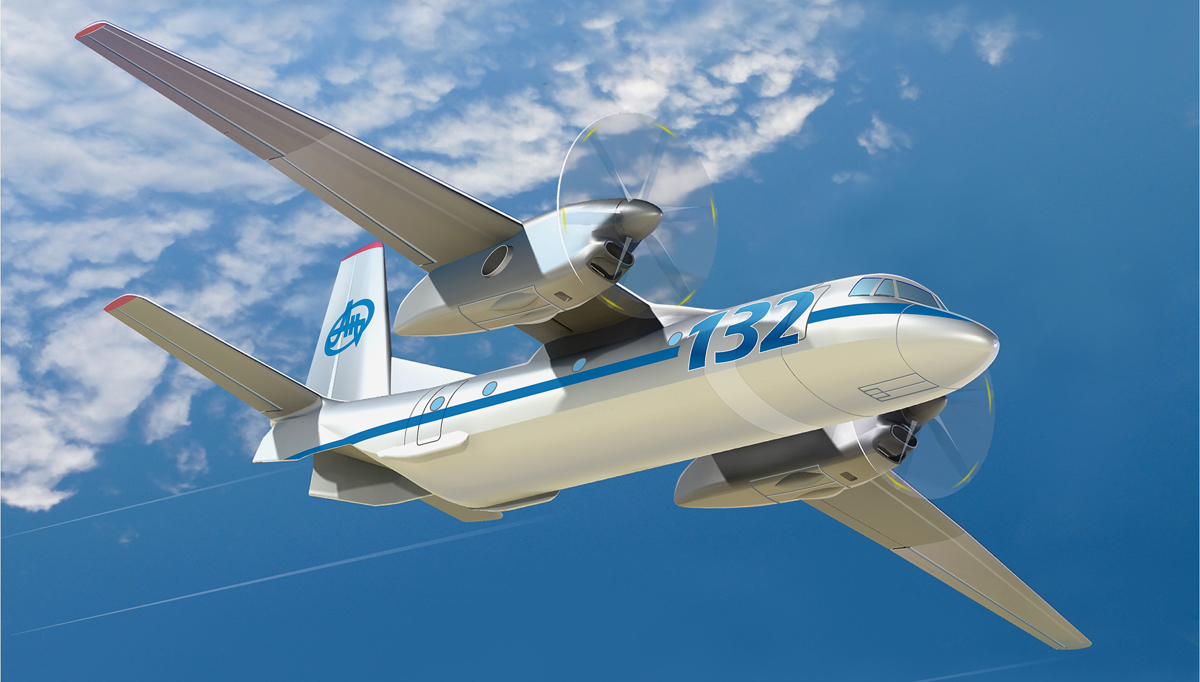
20 October 2015
Lockheed Martin has detailed a proposal to supply former US Navy S-3B Viking anti-submarine warfare aircraft to the South Korean Navy.
The work would see 12 S-3B's removed from long-term storage in the Arizona desert and updated with new equipment, says Clay Fearnow, director of maritime patrol programs at Lockheed Martin. Fearnow spoke to Flightglobal at the Lockheed Martin Chalet at the Seoul International Aerospace and Defense Exhibition 2015.
Fearnow, a former S-3B pilot, says the type has a number of attributes that make it suitable for a return to active service. He says the type was retired mainly owing to the absence of a submarine threat to US carrier battle groups with the end of the Cold War, as well as the navy's desire to narrow the number of aircraft types operating from carriers.
Lockheed estimates that the S-3B airframes in storage still have around 10-12,000hrs flying time remaining.
Fearnow says that the aircraft's cockpits would not require upgrading, but that several systems would. The aircraft's metalic anomaly detector would need to be updated from analogue to digital technology. Other work would involve the aircraft's sonobuoys and ESM equipment. Given South Korea's interest in developing its aerospace capabilities, any work to upgrade the aircraft would all but certainly be undertaken in South Korea, likely by Korea Aerospace Industries or KAL-ASD - the aerospace arm of Korea Airlines.
The aircraft would operate with a four man crew, and would be capable of carrying a mix of four torpedoes and/or anti-shipping missiles.
Other systems integrators, he adds, will likely bid for S-3B refurbishment work should the South Korean move forward with a formal request for proposals. He feels, however, that Lockheed's long experience with the type puts it in a strong position for any requirement that emerges. He says the US company has a significant amount of data about the jet, and conducted all major upgrades when the aircraft served with the US navy.
Should a deal be concluded, which could occur as soon as 2017, the S-3B could re-enter
service in 2019. The initial requirement for the type appears to be 12 aircraft.
When asked if it makes sense for South Korea to be the world's sole operator of a small fleet of bespoke aircraft, Fearnow says that 12 is probably the minimum size for such a fleet.
Moreover, he says that Lockheed has held discussions with two other Asian countries regarding the S-3B, as well as one South American country.
Although the S-3B no longer serves aboard US aircraft carriers, the US navy's VX-30 test and evaluation squadron still operates the type in support roles.
Sources at the ADEX show in Seoul say that South Korea is increasingly concerned about the threat posed by North Korea?s submarine fleet, creating a requirement to complement the country?s fleet of P-3C Orions.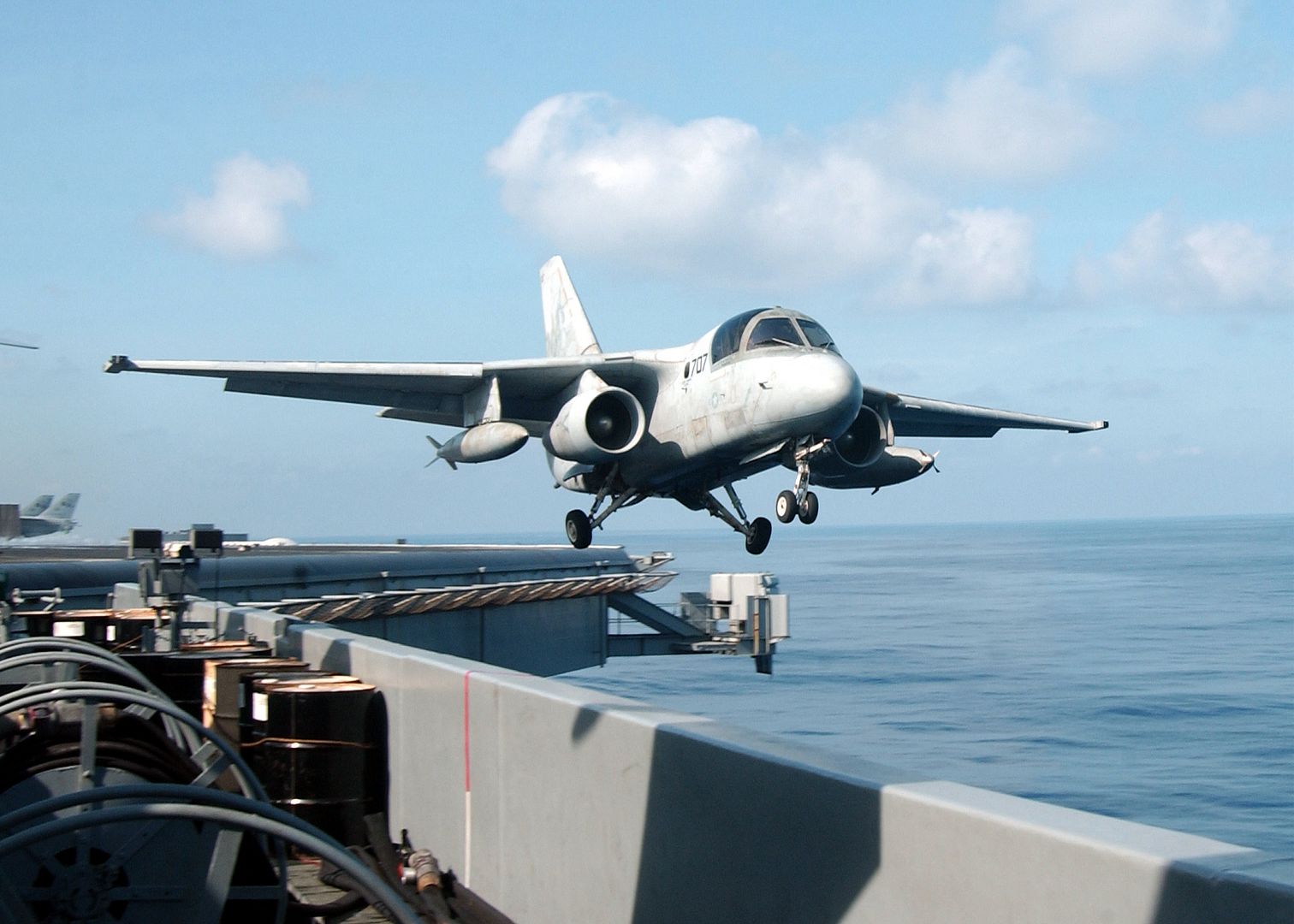
-
10 years agoFri Oct 23 2015, 01:43pm
 Main AdminFORT WORTH, Texas, Oct. 21, 2015 ? Lockheed Martin (NYSE: LMT) successfully completed the maiden flight of the F-16V, the latest and most advanced F-16 on the market today. The October 16 flight marks the first time an F-16 has flown with Northrop Grumman?s advanced APG-83 Active Electronically Scanned Array (AESA) Scalable Agile Beam Radar (SABR), which will deliver a quantum leap in capability for the venerable F-16.
Main AdminFORT WORTH, Texas, Oct. 21, 2015 ? Lockheed Martin (NYSE: LMT) successfully completed the maiden flight of the F-16V, the latest and most advanced F-16 on the market today. The October 16 flight marks the first time an F-16 has flown with Northrop Grumman?s advanced APG-83 Active Electronically Scanned Array (AESA) Scalable Agile Beam Radar (SABR), which will deliver a quantum leap in capability for the venerable F-16.
The F-16V ?Viper? advanced avionics configuration also includes a new cockpit Center Pedestal Display, a modernized mission computer, a high-capacity Ethernet data bus, and several other missions systems enhancements that collectively add significant combat capabilities to address the dynamic threat environments emerging in the coming decades.
?This flight marks a historic milestone in the evolution of the F-16,? said Rod McLean, vice president and general manager of Lockheed Martin?s F-16/F-22 Integrated Fighter Group. ?The new F-16V configuration includes numerous enhancements designed to keep the F-16 at the forefront of international security, strengthening its position as the world?s foremost combat-proven 4th Generation fighter aircraft.?
The F-16V, an option for both new production F-16s and F-16 upgrades, is the next generation configuration that leverages a common worldwide sustainment infrastructure and provides significant capability improvements to the world?s most affordable, combat-proven multi-role fighter.
Northrop Grumman?s APG-83 SABR AESA fire control radar provides 5th Generation air-to-air and air-to-ground radar capability. Northrop Grumman also provides AESA radars for the F-22 Raptor and F-35 Lightning II.
With more than 4,550 F-16s delivered to date, the F-16V is a natural step in the evolution of the world?s most successful 4th Generation fighter.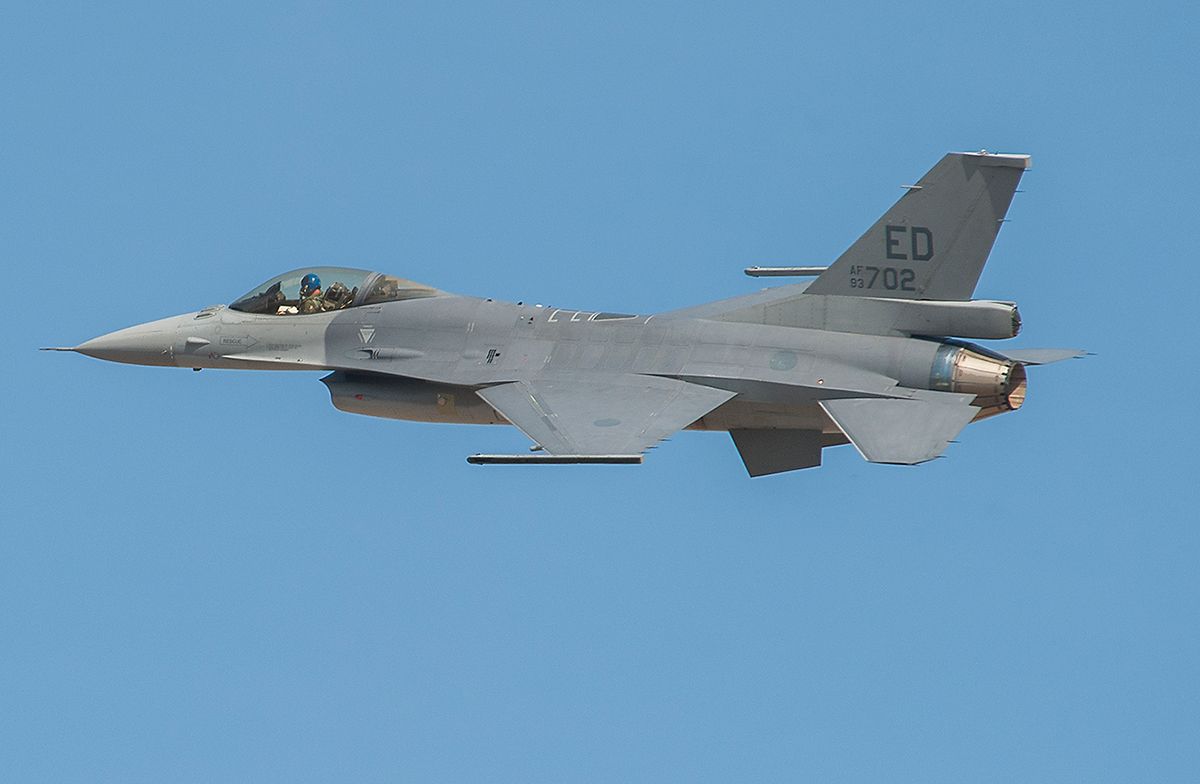
The US Missile Defense Agency salutes the capabilities of the SAMP/T
15/10/2015
On 6 October 2015, during its yearly Multinational Ballistic Missile Defense Conference, the US Missile Defense Agency bestowed the ?Technology Pioneer Award? on the French and Italian teams behind the SAMP/T extended air defence system. This prize comes in recognition of the successful firing on 6 March 2013 of an Aster 30 Block 1 missile against a target representing a SCUD-type tactical ballistic missile, in liaison with the NATO command chain.
The aim of the firing was to demonstrate that the ballistic missile defence capability of the SAMP/T, and its interoperability with NATO through the use of Link 16, allow it to be integrated into joint forces and inter-allied operations.
The firing was carried out at the DGA?s missile testing centre in Biscarrosse, jointly with the Italian 4th artillery regiment from Mantua and the French Air Warfare Centre (CEAM) at Mont-de-Marsan. It mobilized considerable resources from several DGA and NATO centres, as well as a US Aegis frigate.
The main strengths of the SAMP/T are its 360? area defence and its ability to simultaneously engage all types of short-range ballistic and conventional air targets. Developed and manufactured by Thales and MBDA through the Eurosam consortium, as a Franco-Italian cooperation, the SAMP/T system is in service in both countries, and is a key part of their contribution to NATO?s ballistic missile defence programme.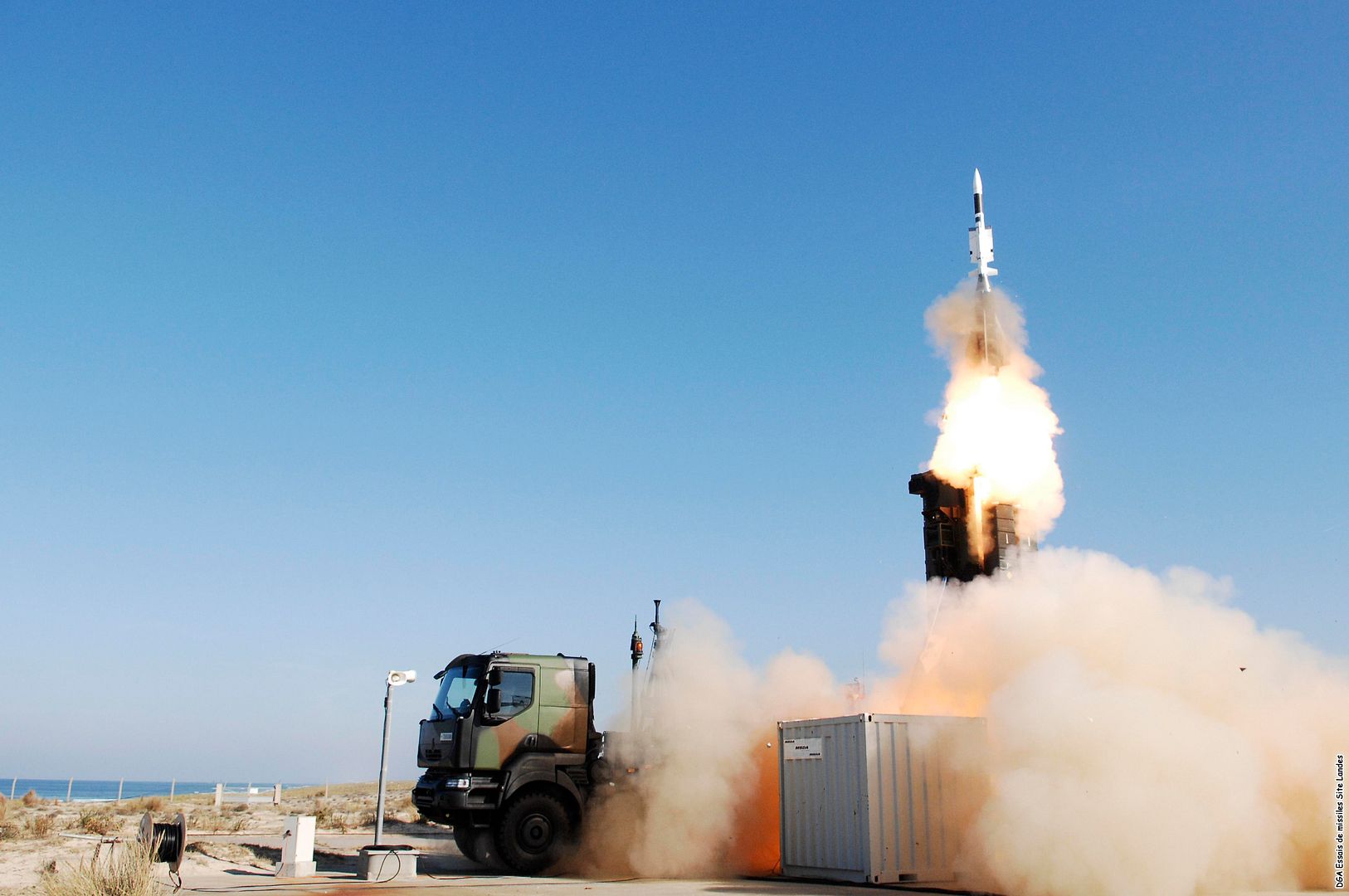
PACIFIC OCEAN (Oct. 19, 2015) U.S. Naval aircraft and aircraft from the Chilean Air Force participate in a fly-by adjacent to aircraft carrier USS George Washington (CVN 73). UNITAS 2015, the U.S. Navy's longest running annual multinational maritime exercise, is part of the Southern Seas deployment planned by U.S. Naval Forces Southern Command/U.S. 4th Fleet. This 56th iteration of UNITAS is conducted in two phases: UNITAS Pacific, hosted by Chile, Oct. 13-24, 2015 and UNITAS Atlantic, hosted by Brazil scheduled for November. (U.S. Navy photo's by L.t.j.g. David Babka/Released)

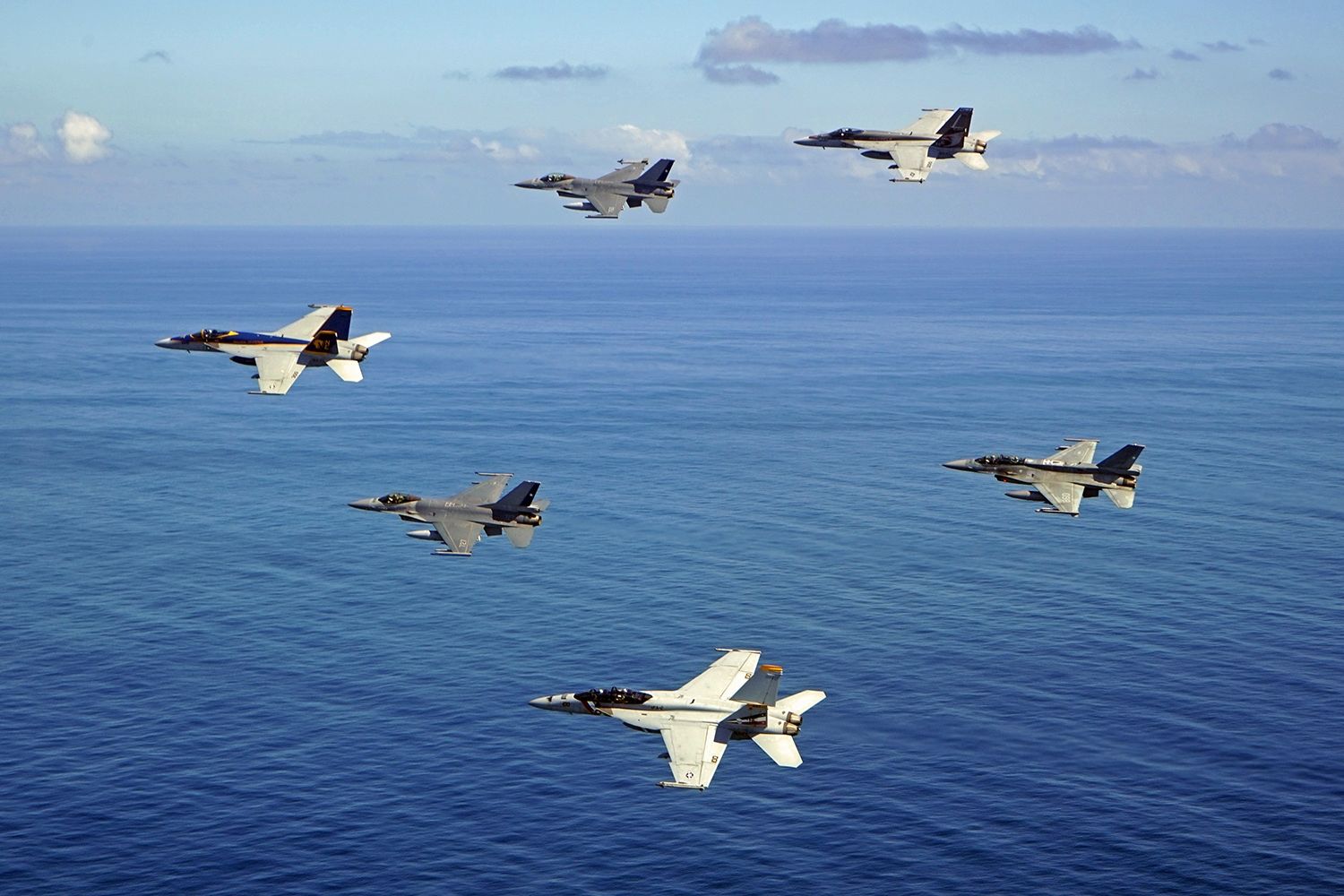
-
10 years ago
 Main AdminMEDITERRANEAN SEA (Oct. 21, 2015) Lt. Cosimo Manica, a Marina Militare Pilot and Monteiasi, Italy native, currently assigned to the ?Ace of Spades? Marine Attack Squadron (VMA) 231, takes off from the flight deck of the amphibious assault ship USS Kearsarge (LHD 3) in an Italian AV-8B Harrier Oct. 21, 2015. Kearsarge, deployed as part of the Kearsarge Amphibious Ready Group, is conducting naval operations in the U.S. 6th Fleet area of operations in support of U.S. national security interests in Europe. (U.S. Navy Photo by Mass Communication Specialist Seaman Apprentice Ryre Arciaga/Released)
Main AdminMEDITERRANEAN SEA (Oct. 21, 2015) Lt. Cosimo Manica, a Marina Militare Pilot and Monteiasi, Italy native, currently assigned to the ?Ace of Spades? Marine Attack Squadron (VMA) 231, takes off from the flight deck of the amphibious assault ship USS Kearsarge (LHD 3) in an Italian AV-8B Harrier Oct. 21, 2015. Kearsarge, deployed as part of the Kearsarge Amphibious Ready Group, is conducting naval operations in the U.S. 6th Fleet area of operations in support of U.S. national security interests in Europe. (U.S. Navy Photo by Mass Communication Specialist Seaman Apprentice Ryre Arciaga/Released)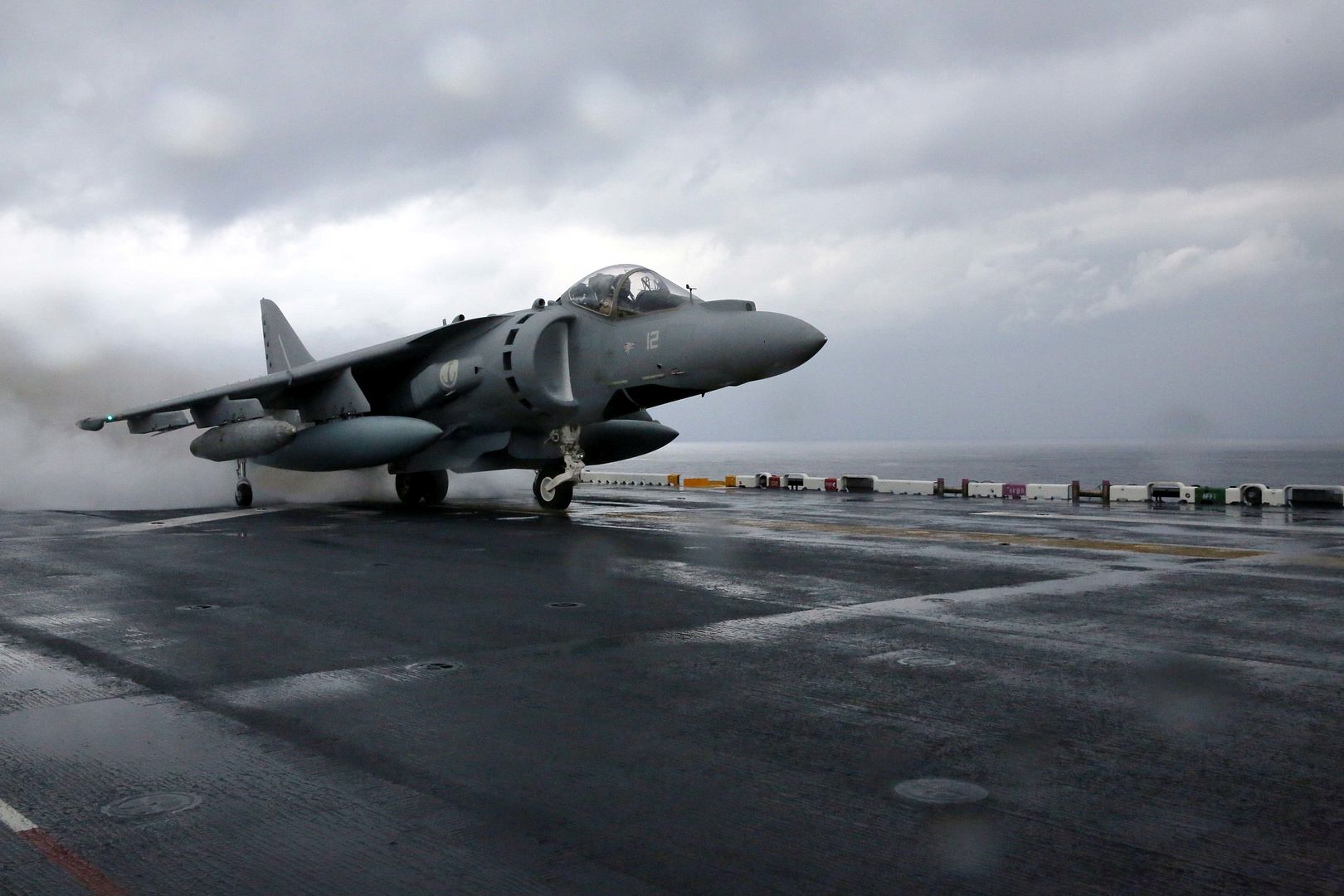
A team of Air Force Global Strike Command Airmen from the 90th Missile Wing at F.E. Warren Air Force Base, Wyo., launched an unarmed Minuteman III intercontinental ballistic missile equipped with a test reentry vehicle from Vandenberg Air Force Base, Calif., Oct. 21, 2015. The ICBM's reentry vehicle, which contained a telemetry package used for operational testing, traveled approximately 4,200 miles to the Kwajalein Atoll in the Marshall Islands. Test launches verify the accuracy and reliability of the ICBM weapon system, providing valuable data to ensure a continued safe, secure and effective nuclear deterrent. (U.S. Air Force photo/Airman 1st Class Ian Dudley)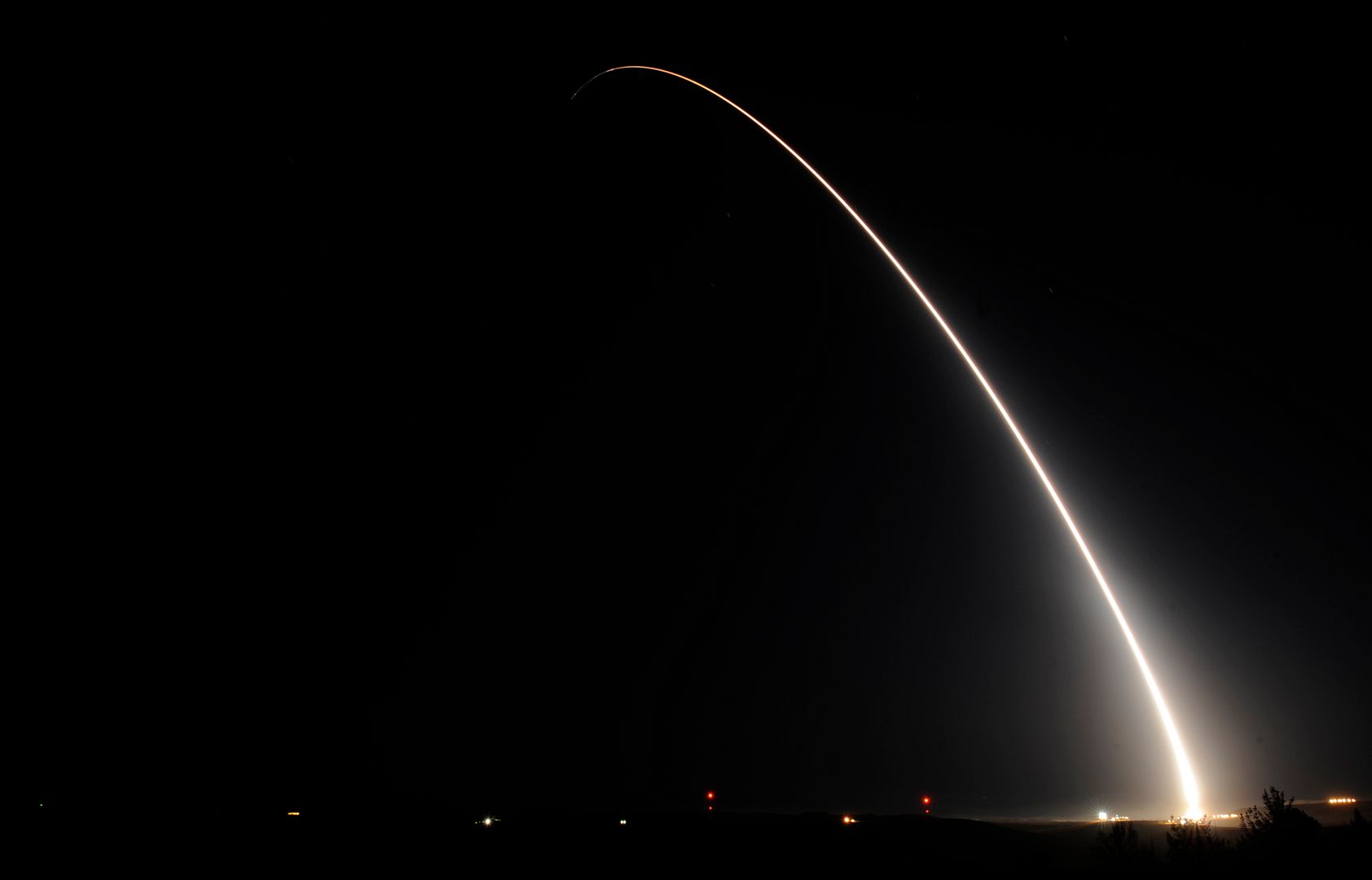
STRATTON AIR NATIONAL GUARD BASE, N.Y. (AFNS) -- The takeoff of the New York Air National Guard's LC-130 Hercules ski-equipped aircraft here Oct. 16 marked the official start of the 109th Airlift Wing's 28th season of support to science research at the South Pole.
By the end of the month, the wing?s Airmen and aircraft are expected to be in place at McMurdo Station, Antarctica, participating in Operation Deep Freeze, the military component of the U.S. Antarctic Program, managed by the National Science Foundation.
Lt. Col. Seth Barrows was part of the first aircrew to leave and will be the 139th Expeditionary Airlift Squadron deployed commander upon arrival. Barrows said as the deployed commander he must ensure planes, people and weather are all good to ensure a safe, successful mission.
"The weather is the biggest challenge so you watch that weather very closely, and from there you do your mission," said Lt. Col. Christian Sander, the 109th Operations Group commander.
Throughout the season, which runs through February, a total of seven LC-130 ski-equipped aircraft and about 500 Airmen are expected to deploy, with 330 missions planned. About 120 Airmen will be deployed on the ice at any one time.
The unique capabilities of the ski-equipped LC-130 make it the only one of its kind in the U.S. military able to land on snow and ice. The primary mission of the 109th AW is to provide airlift within Antarctica, flying to various remote locations from McMurdo Station. Crews will transport scientists, support, fuel, supplies, medical supplies and more throughout the season.
This year, the IcePod missions are expected to increase from the previous season. The IcePod is an externally mounted electronics pod that provides an integrated ice imaging system that measures in detail both the ice surface and the ice bed.
"This season is seeing the maturation of the Common Science Support Pod with 18 IcePod missions planned compared to three missions last season," said Lt. Col. Blair Herdrick, the 139th Airlift Squadron's Antarctic operations chief. "IcePod is a project by Lamont-Doherty Earth Observatory at Columbia University in New York. The IcePod project utilizes the Common Science Support Pod to house a variety of instruments to measure changes in the Antarctic ice sheet."
The IcePod missions were flown for the first time in Antarctica last season, and were deemed one of the biggest successes of the year.
The 109th AW has been supporting the NSF's South Pole research since 1988. Since 1999, the unit has been the sole provider of this type of airlift to the NSF and U.S. Antarctic Program research efforts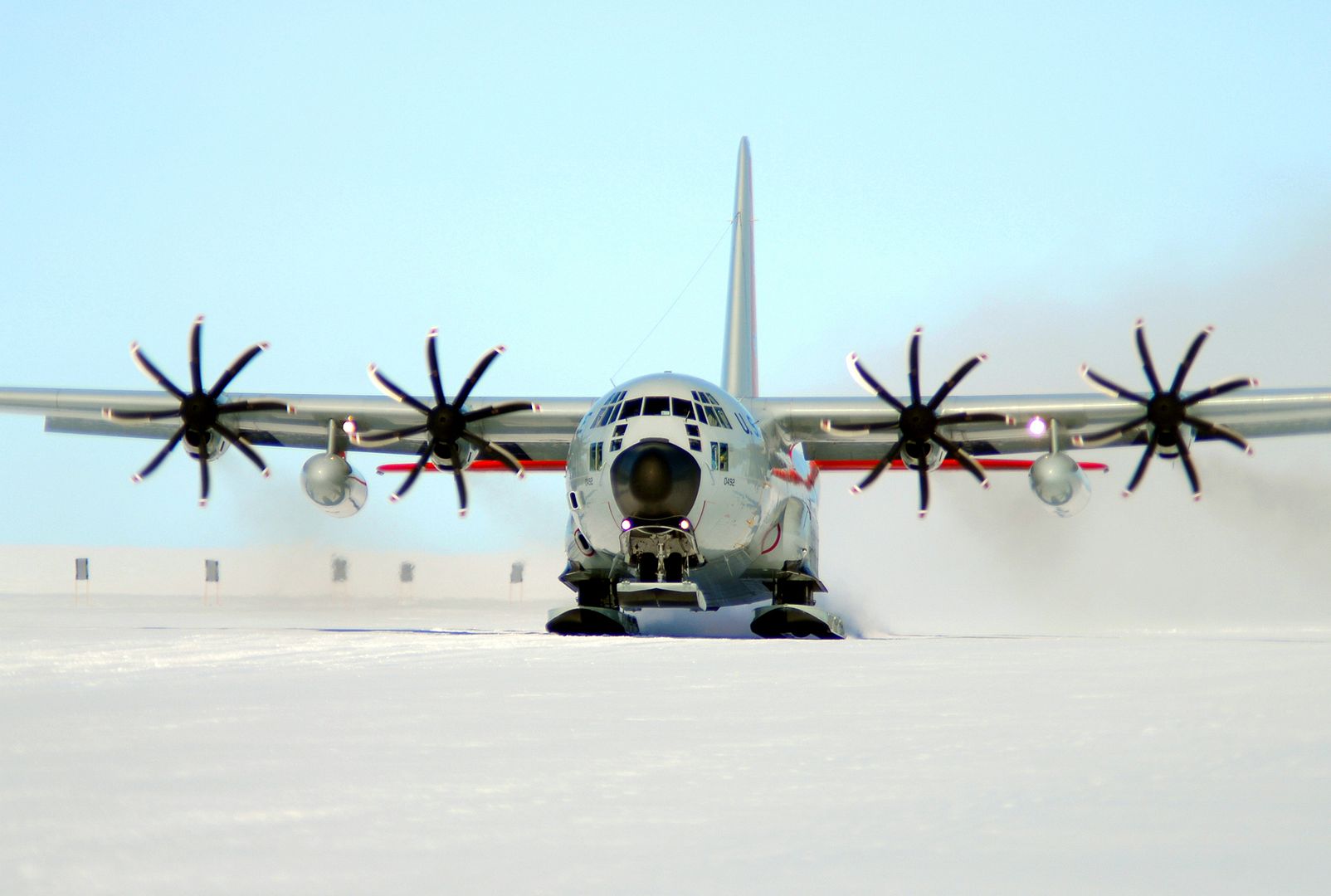
-
10 years agoSat Oct 24 2015, 12:05am
 Main AdminWATERS SOUTH OF JAPAN (Oct. 21, 2015) An MH-60R Sea Hawk helicopter, attached to the ?Warlords? of Helicopter Strike Squadron (HSM) 51, takes off from the flight deck of the Arleigh Burke-class guided missile destroyer USS McCampbell (DDG 85) during flight operations. McCampbell is on patrol in the 7th Fleet area of operation in support of security and stability in the Indo-Asia-Pacific region. (U.S. Navy photo's by Mass Communication Specialist 2nd Class Kevin V. Cunningham/Released)
Main AdminWATERS SOUTH OF JAPAN (Oct. 21, 2015) An MH-60R Sea Hawk helicopter, attached to the ?Warlords? of Helicopter Strike Squadron (HSM) 51, takes off from the flight deck of the Arleigh Burke-class guided missile destroyer USS McCampbell (DDG 85) during flight operations. McCampbell is on patrol in the 7th Fleet area of operation in support of security and stability in the Indo-Asia-Pacific region. (U.S. Navy photo's by Mass Communication Specialist 2nd Class Kevin V. Cunningham/Released)
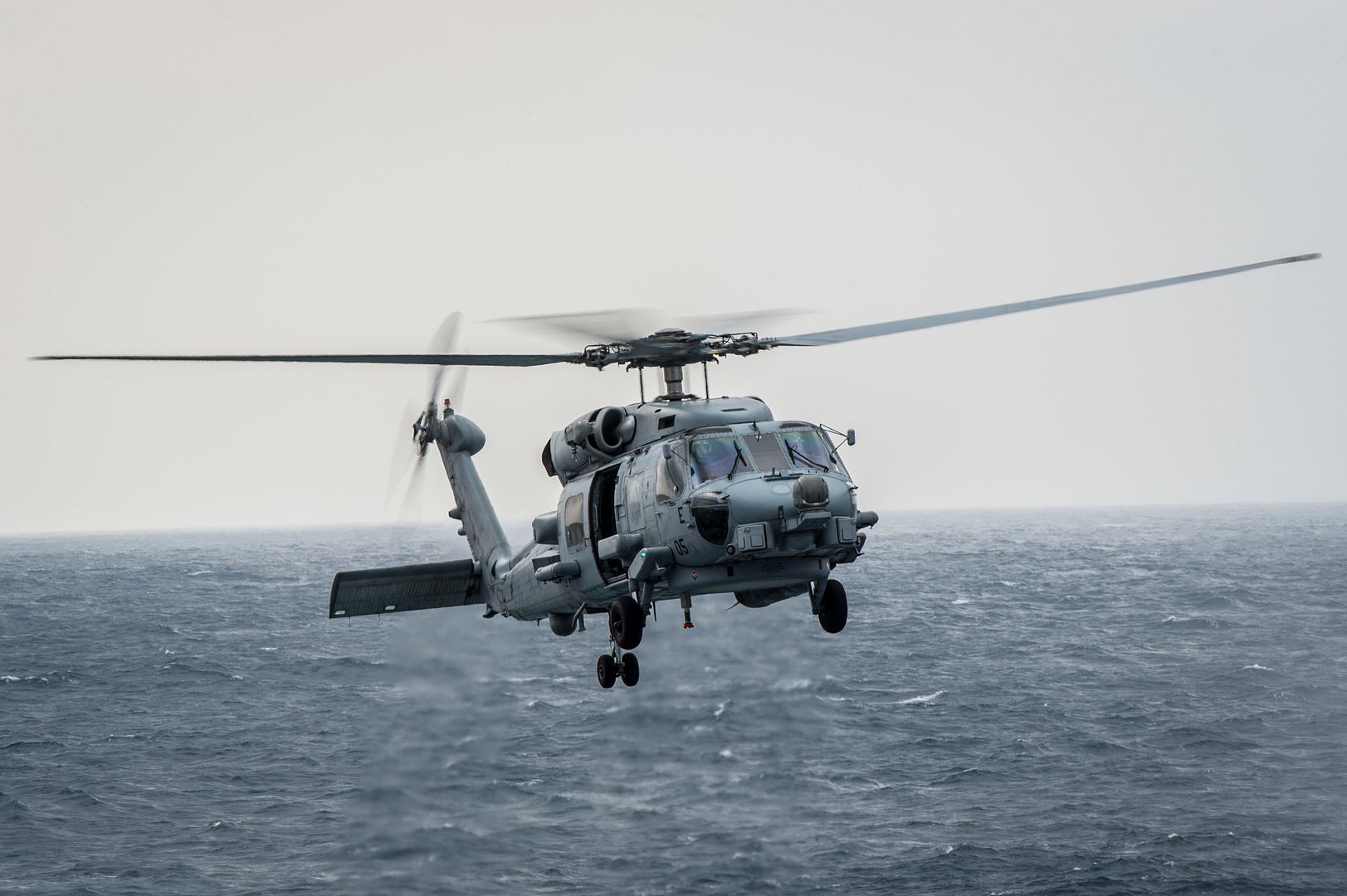
WASHINGTON (AFNS) -- The Air Force?s intelligence, surveillance and reconnaissance mission areas were highlighted with the release of a major motion picture Oct. 16.
The Air Force Entertainment Liaison Office teamed with movie producers to tell the story of Capt. Francis Gary Powers, an Air Force U-2 pilot who was shot down in 1960 while flying a reconnaissance mission over Soviet Union air space, in the movie ?Bridge of Spies.?
ISR is one of the Air Force?s five enduring core missions and is integral to global vigilance for the nation -- it?s foundational to global reach and global power.
?The film ?Bridge of Spies? features the U-2 aircraft, and with the United States Air Force support, filmmakers were provided access to film the high-altitude, reconnaissance aircraft and gain insights from current U-2 pilots based out of Beale Air Force Base in California,? said Secretary of the Air Force Deborah Lee James.
The U-2 Dragon Lady is an important part of the Air Force?s ISR enterprise, and provides high-altitude, all-weather surveillance and reconnaissance in direct support of U.S. and allied forces. It delivers critical imagery and signals intelligence to decision makers throughout all phases of conflict, including peacetime indications and warnings, low-intensity conflict, and large-scale hostilities.
?The Air Force agreed, with the Department of Defense, to participate in the motion picture ?Bridge of Spies? because it was an opportunity to highlight history and showcase Airmen to worldwide audiences,? said Develyn Watson, the Secretary of the Air Force Public Affairs Entertainment Liaison deputy director.
The Los Angeles-based entertainment liaison office falls under the public affairs career field, and is entertainment industry?s primary contact for access to Air Force personnel and equipment. In addition to coordinating shoots on Air Force bases, the office also reviews television, movie and video game content for accuracy when DOD support is authorized. Past movie projects include the first two ?Iron Man? films, ?Terminator Salvation? and the first three Transformer films, including ?Transformers: Revenge of the Fallen.?
?Filmmakers were provided access to and filmed an actual U-2; relied on the expertise of current U-2 pilots; and gained insights from Air Force historians,? Watson said. ?These interactions afforded the visual effects crew and production team with the ability to recreate scenes that added to the realism and authenticity of the film.
?This collaborative effort between the filmmakers and the Air Force provided a level of production value that would not have been achieved without the Air Force and DOD cooperation.?
The U-2?s feature brings attention to the aircraft, and the importance of its mission today. The Air Force ISR enterprise provides actionable intelligence from multiple sources -- including platforms, sensors, people and databases -- to national decision makers, combatant commanders and tactical level personnel.
?It?s the top combatant commander requirement and will remain so for the foreseeable future -- balancing capabilities across the range of military operations remains a top priority as ISR experts deliver decision advantage to commanders at all levels,? said Lt. Gen. Robert Otto, the ISR deputy chief of staff. ?As we transition to what will likely be a highly volatile, unpredictable future, Air Force ISR will be the bedrock upon which the service provides freedom of action to our joint and coalition partners.?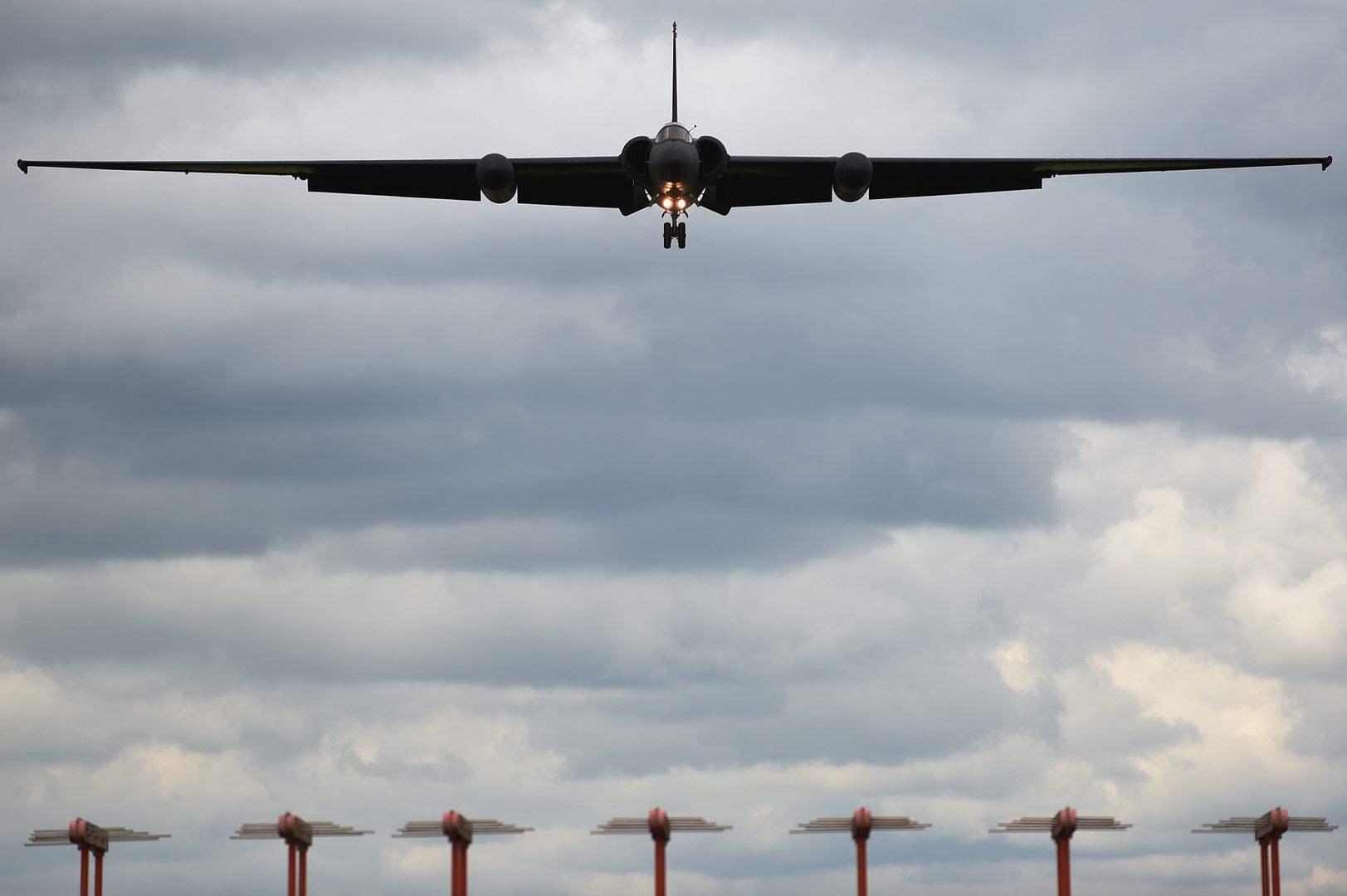
EDWARDS AIR FORCE BASE, Calif. (AFNS) -- The KC-46 program's first test aircraft, a Boeing 767-2C (EMD-1), departed from its home at Boeing Field in Seattle and touched down here for the first time for testing Oct. 15.
The plan is to have EMD-1 at Edwards Air Force Base for about two weeks, as Boeing and the 418th Flight Test Squadron conduct ground effects and fuel onload fatigue testing on the new tanker.
Ground effects testing will gather aerodynamic data for updating the KC-46A Pegasus simulator as well as supporting certification. Fuel onload fatigue tests will gather data to characterize the aircraft interaction typically experienced when the KC-46A is flying in receiver formation behind a current KC-135 Stratotanker or KC-10 Extender.
While the KC-46's role is to refuel other aircraft, it too may need to be refueled from other KC-10s or KC-135s to extend its range. Fuel onload fatigue testing is the first look at the KC-46 acting in that role and the interactions between the three different tankers in an aerial refueling formation.
As throughout history, Edwards AFB continues to be the premier base for flight testing the Air Force's newest capability.
"For ground effects, Edwards Air Force Base provides calm morning weather and long runways, including the lakebeds, both are requirements to take the data," said Capt. Dylan Neidorff, a KC-46 test operations engineer. "For fuel onload fatigue, Edwards has a top notch special instrumentation section who provides modifications to legacy tanker aircraft to support data collection on the 767-2C."
Neidorff said Boeing and Air Force pilots have been operating as combined crews through all of the testing at Edwards including the ferry flight from Seattle.
"This also includes flight test engineers who have been on each fuel onload fatigue flight,? he said.
Several units from both on and off base are supporting the testing. The 412th Test Engineering Group is providing special instrumentation support; the 416th Flight Test Squadron is providing chase aircraft support; and the 370th FTS is providing KC-135 tanker crew support. The 92nd Air Refueling Wing based at Fairchild AFB, Washington, is also providing the KC-135 and maintenance support, and the 60th Air Mobility Wing based at Travis AFB, California, is providing the KC-10 and maintenance personnel.
According to Neidorff, the KC-46A will return to Edwards AFB to accomplish testing in the Benefield Anechoic Chamber as well as conduct aerial refueling certifications.
The KC-46A is intended to replace the Air Force's aging tanker fleet, which has been refueling aircraft for more than 50 years. With more refueling capacity and enhanced capabilities, improved efficiency and increased capabilities for cargo and aeromedical evacuation, the KC-46A will provide aerial refueling support to the Air Force, Navy, Marine Corps as well as allied nation coalition force aircraft.
The 412th Test Wing at Edwards AFB is the lead developmental test organization for the KC-46 program.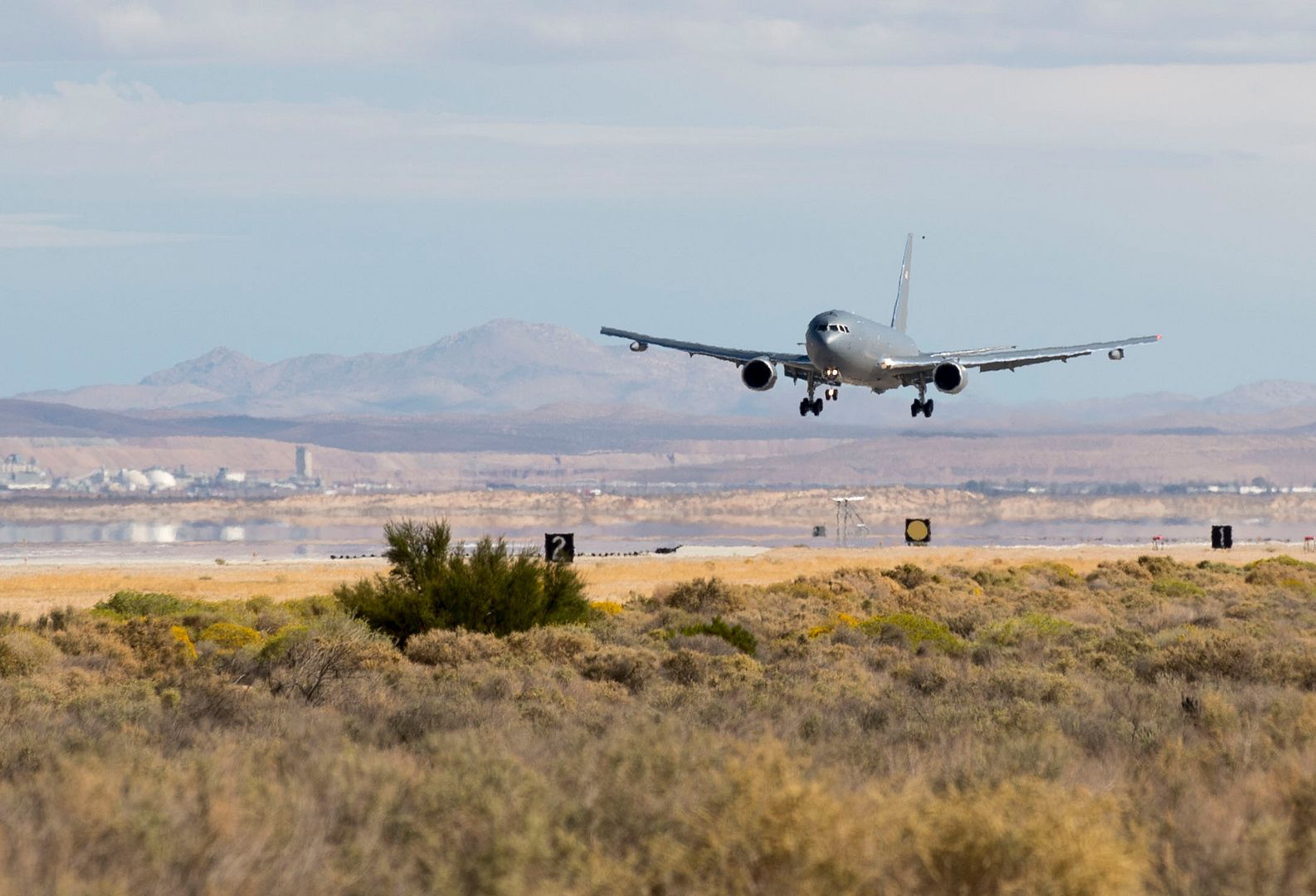
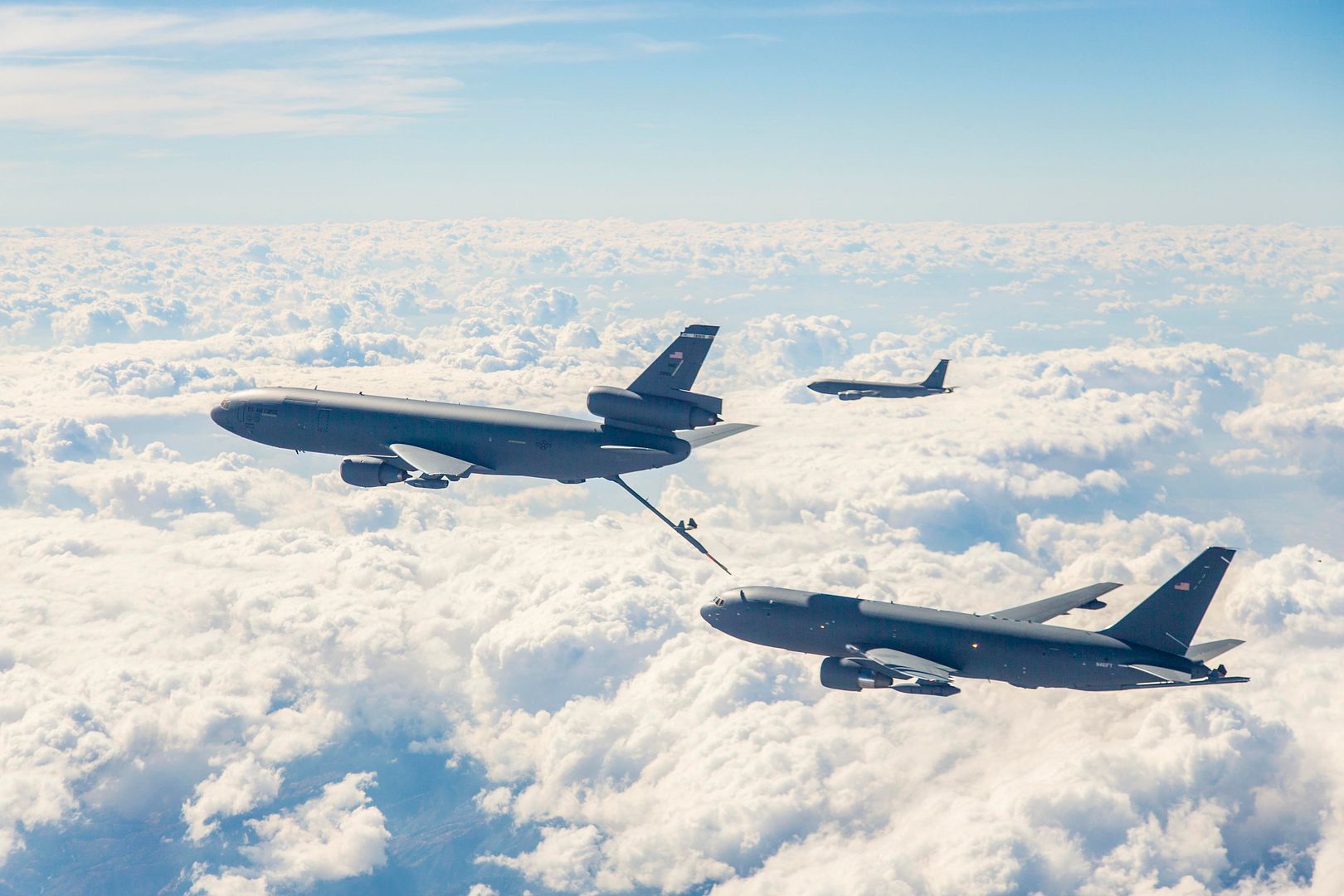
OWEGO, N.Y., Oct. 22, 2015 /PRNewswire/ -- The U.S. Navy accepted the first MH-60R helicopter slated for Denmark from Lockheed Martin (NYSE: LMT) in a ceremony today at the Lockheed Martin facility in Owego, New York.
"We are excited to accept this aircraft bound for Denmark," said Rear Adm. CJ Jaynes, program executive officer for air anti-submarine warfare, assault and special mission programs, which oversees the U.S. Navy's H-60 program office. " The Romeo is the U.S. Navy's primary rotary anti-submarine and anti-surface warfare platform in operation and we're proud to know these will be flying soon with the Royal Danish Air Force -- our first Seahawks in Europe."
Manufactured by Sikorsky Aircraft and provided with advanced mission systems and sensors by Lockheed Martin, the MH-60R is operational and deployed as the primary U.S. Navy anti-submarine and anti-surface warfare system for both open- ocean and littoral zones. In 2012, Denmark announced it will acquire a total of nine MH-60R aircraft by 2018 to conduct missions such as surveillance, search and rescue, anti-piracy and anti-surface warfare.
"MH-60R helicopters host the complete package of sensors and systems that address today's increasing threats," said Dan Spoor, Lockheed Martin vice president of Aviation and Unmanned Systems. "We are honored to extend our international partnership with the Royal Danish Air Force to deliver these capabilities and the technology that will protect our allies around the globe."
Prior to being delivered to the Royal Danish Air Force, these aircraft will enter a series of testing to validate Danish configuration modifications. The first aircraft will be delivered to Denmark in the second quarter of 2016, and the full fleet will be delivered by 2018.
Denmark is the second international partner in the MH-60R program, following the Royal Australian Navy. To date, Lockheed Martin has delivered a total of 14 of 24 Australian aircraft ahead of schedule. The remaining 10 aircraft will be delivered in 2016.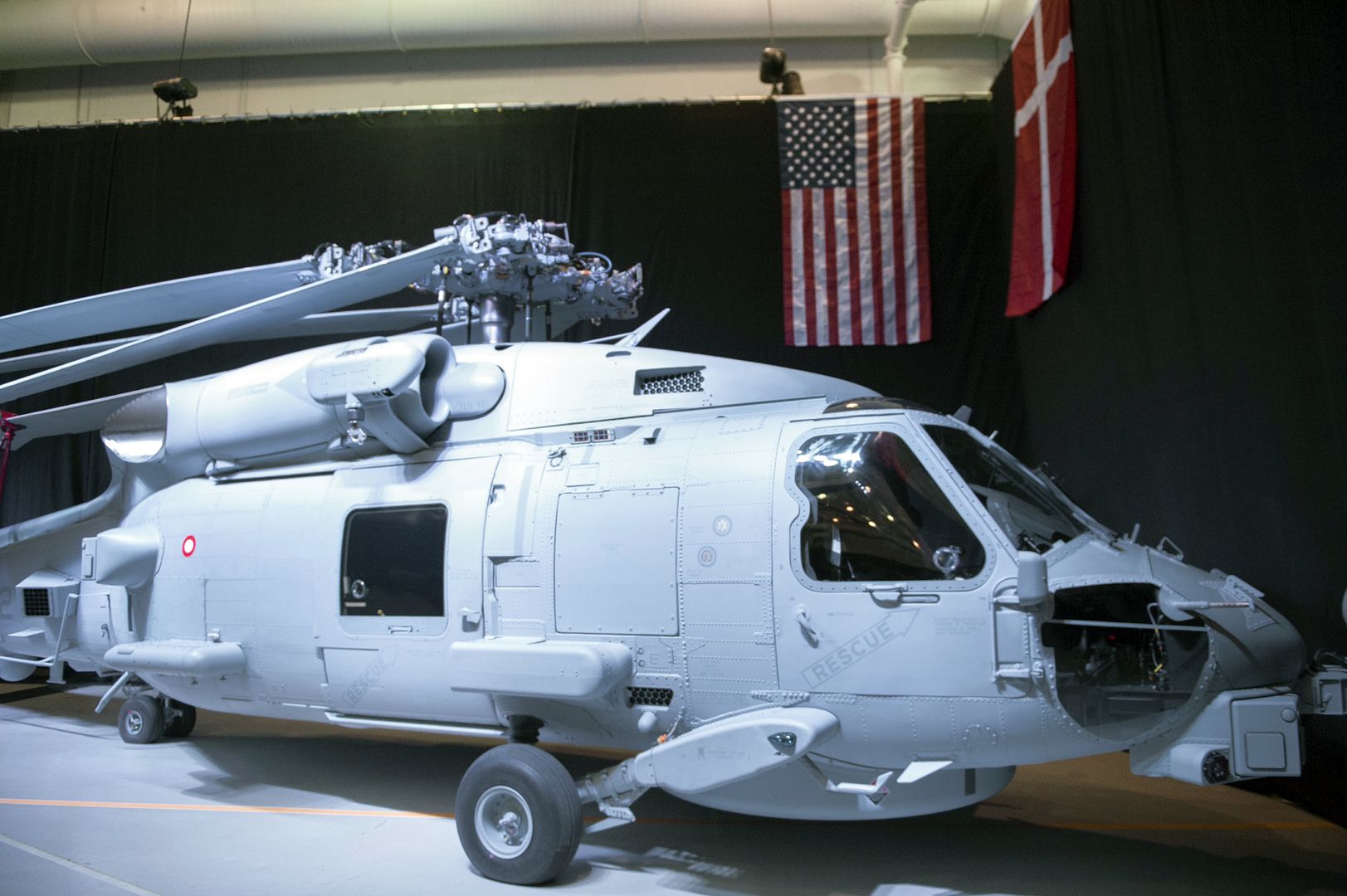
OSLO, Norway, Oct. 22, 2015 /PRNewswire/ -- Boeing (NYSE: BA) and Norwegian have finalized an order for 19 787-9 Dreamliners valued at more than $5 billion at current list prices. The order also includes options for 10 more 787-9s, as the carrier looks to significantly grow its existing long-haul fleet into the next decade. It is the largest single order for 787-9s from a European airline.
Norwegian currently operates eight 787-8s and has previously ordered 11 787-9s through lease agreements. With today's order, the carrier, headquartered in Oslo, will expand its total 787 fleet to nearly 40 airplanes in the coming years.
"This order of 19 new Dreamliners is a major milestone and enables Norwegian to offer a wide range of new routes to consumers worldwide. The order is also essential to further strengthening the company in the global competition," said Bj?rn Kjos, Norwegian's CEO. "After two years of operating low-cost long-haul flights, our load factors have averaged in the nineties, which proves the demand for affordable flights between Europe and the US and Europe and Asia. Future growth and competiveness in the long-haul market depends on the fuel-efficient, state-of-the art 787 Dreamliner. Not least, the Dreamliner offers the best passenger experience."
The 787-9 complements and extends the 787 family. With the fuselage stretched by 6 meters (20 feet) over the 787-8, the 787-9 can fly up to 20 percent more passengers and 23 percent more cargo farther yet with the same exceptional environmental performance ? 20 percent less fuel use and 20 percent fewer emissions than the airplanes they replace.
"Norwegian has led the way in utilizing the exceptional performance of the 787 to develop a successful low-cost long-haul operation," said Todd Nelp, vice president of European Sales, Boeing Commercial Airplanes. "The addition of 787-9s to the Norwegian fleet will enable it to grow its route structure, while providing more range and capacity with outstanding passenger comfort."
The 787-9 leverages the visionary design of the 787-8, offering passenger-pleasing features such as the industry's largest windows, large overhead bins with room for everyone's bag, modern LED lighting, air that is cleaner, more humid and at a higher pressure for greater comfort and technology that senses and counters turbulence for a smoother ride.
Norwegian serves more than 130 destinations across Europe, North Africa, the Middle East, the USA and Southeast Asia, with a fleet that includes 90 Next-Generation 737-800s and eight 787-8s.
In 2014 the airline carried nearly 24 million passengers and has won numerous awards for its onboard service, including a SkyTrax award for 'Best low-cost long-haul airline.' With today's order for 19 787-9s, Norwegian has more than 150 unfilled orders from Boeing, including 100 737 MAXs.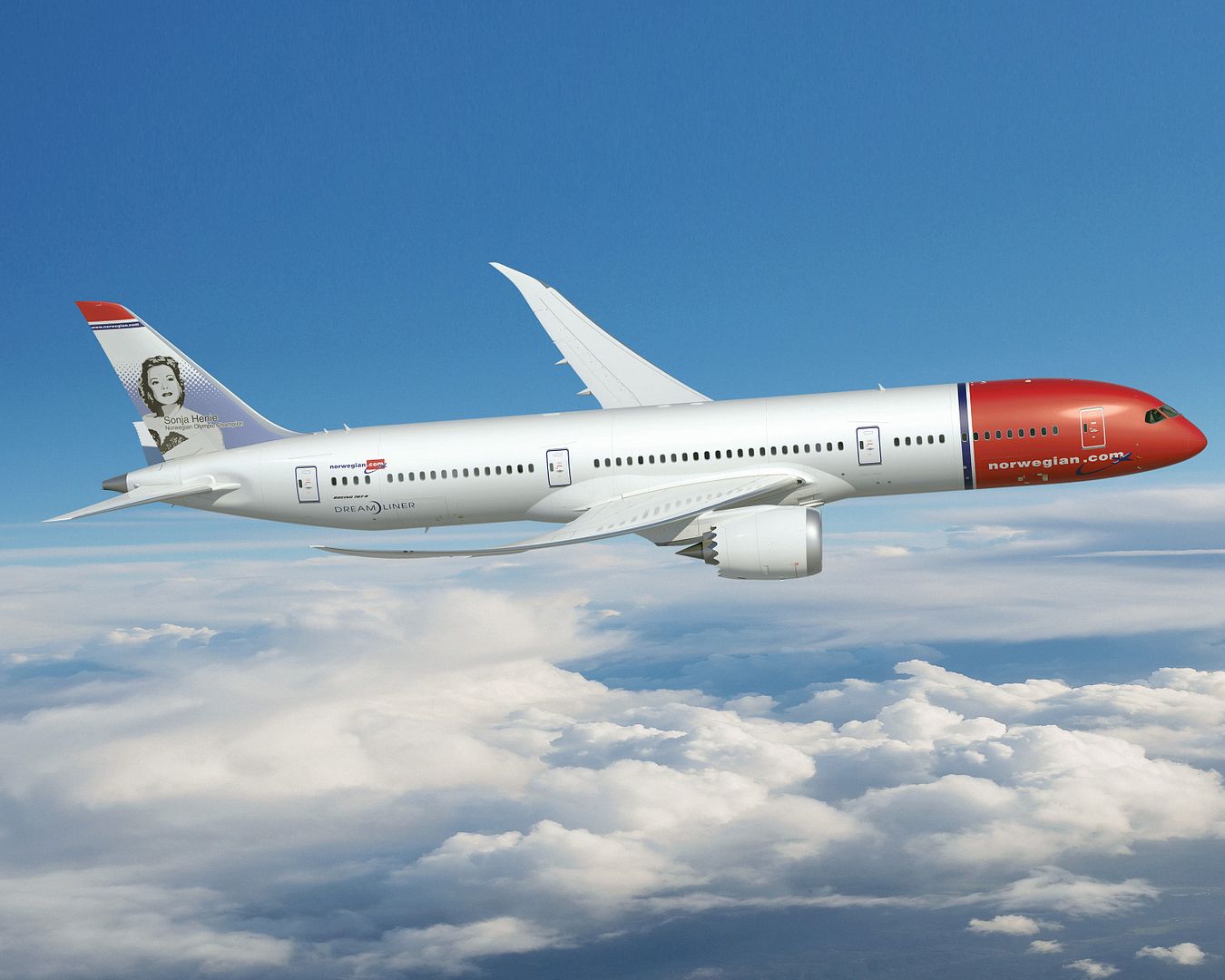
Published on 22 Oct 2015
Combat routine of the Russian Aerospace Forces' fighter aviation (Hmeymim airbase, Syria
-
10 years agoSat Oct 24 2015, 05:57pm
 Main AdminHornet Ball 2015
Main AdminHornet Ball 2015
-
10 years ago
 Main AdminCF-188 Hornet fighter jets from the Royal Canadian Air Force conduct training in Iqaluit during Exercise VIGILANT SHIELD.
Main AdminCF-188 Hornet fighter jets from the Royal Canadian Air Force conduct training in Iqaluit during Exercise VIGILANT SHIELD.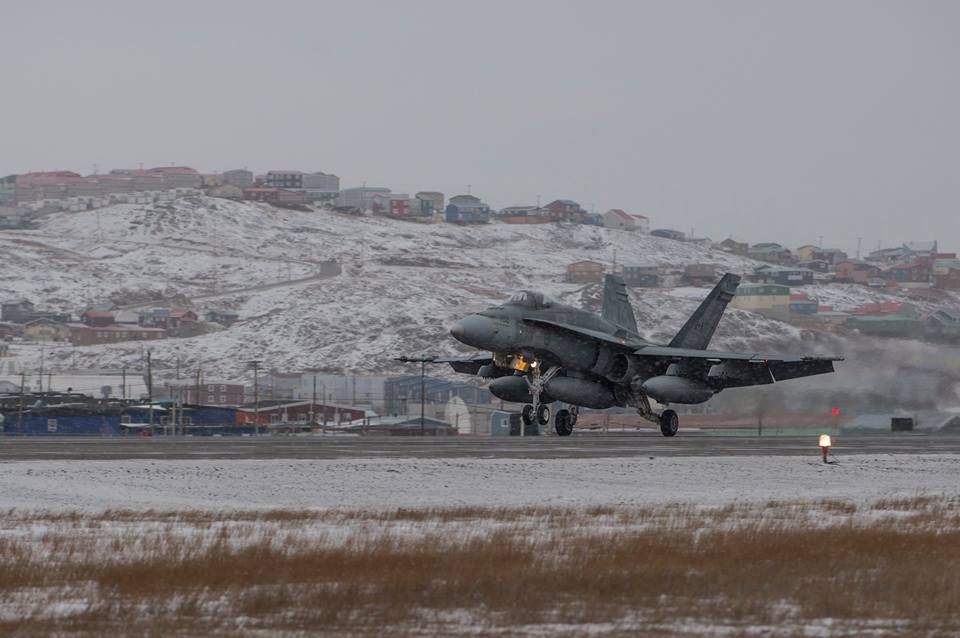
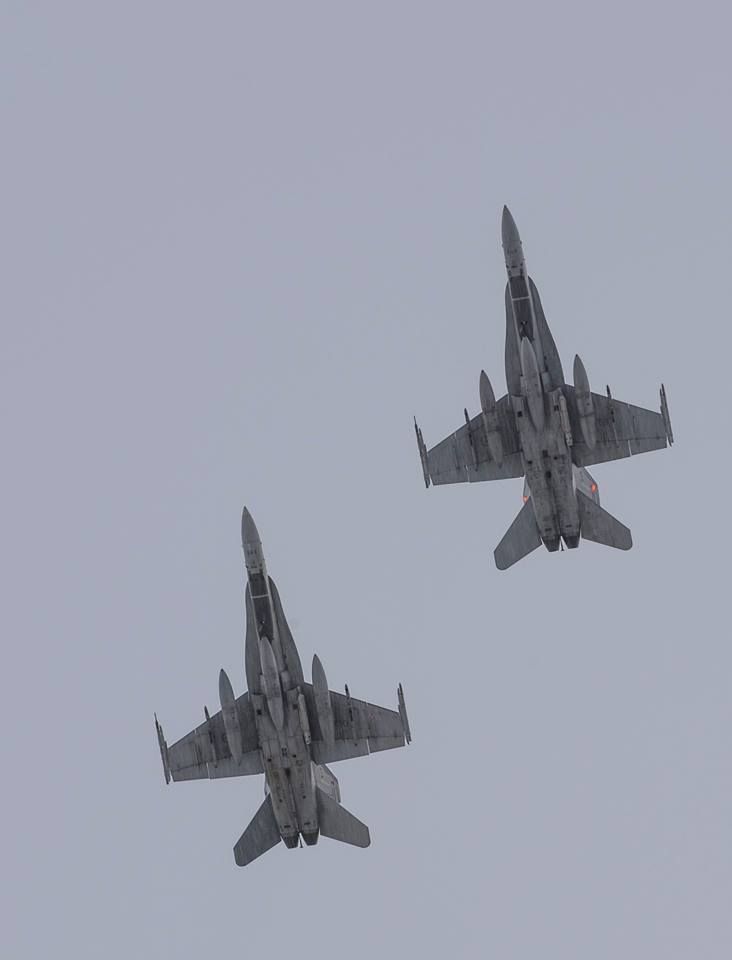
Search and rescue teams from the Royal Canadian Air Force conduct training in Iqaluit during Exercise VIGILANT SHIELD.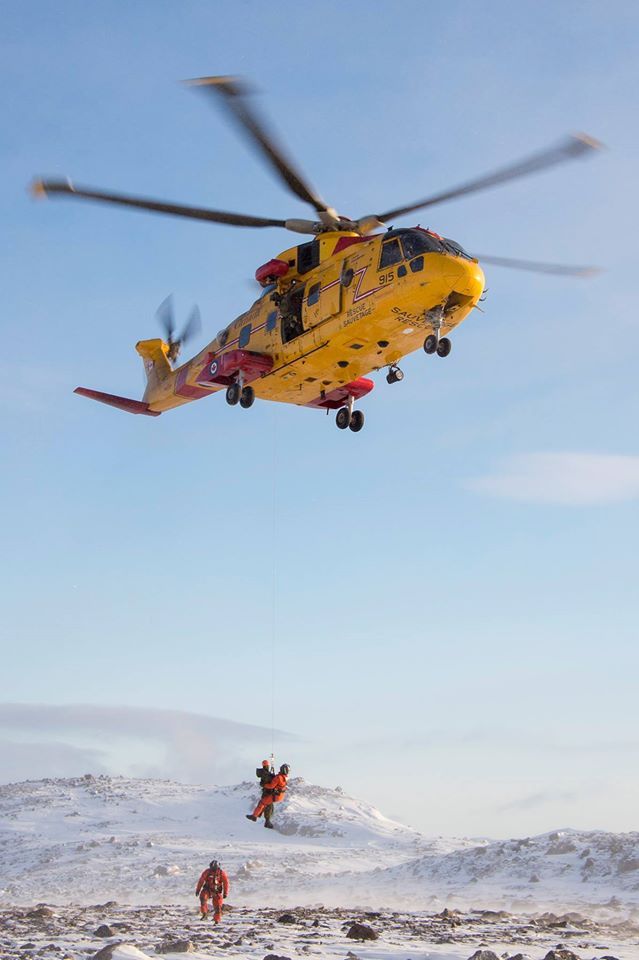
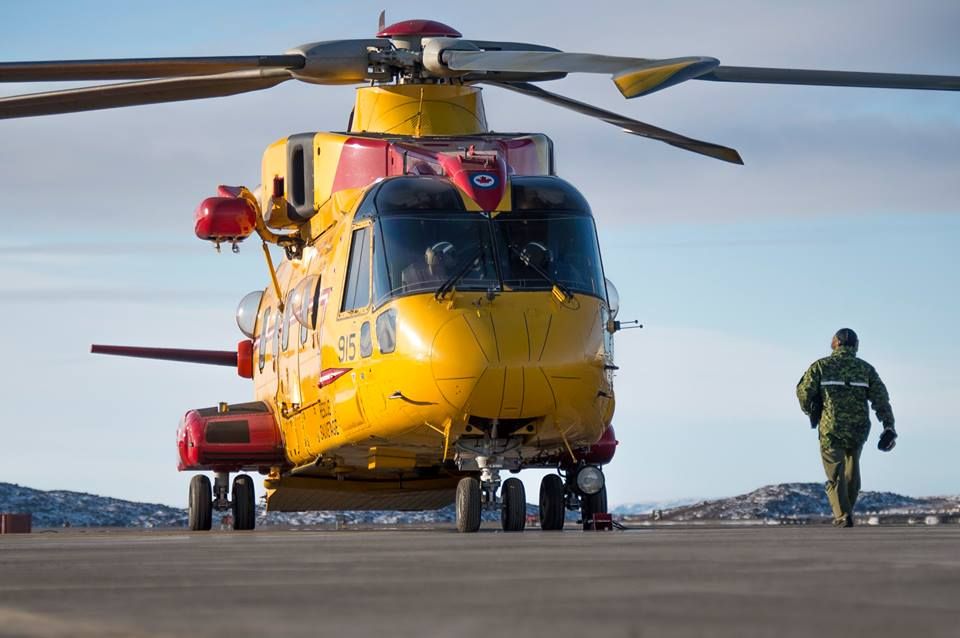
Exercise VIGILANT SHIELD is a bi-national exercise which emphasizes an integrated Canadian and American exercise program to support respective national strategy for North America?s defence.
AEGEAN SEA (Oct. 25, 2015) An AH1-W Cobra attached to Marine Medium Tiltrotor Squadron (VMM) 162, the ?Golden Eagles,? takes off from the flight deck of the amphibious assault ship USS Kearsarge (LHD 3) during Egemen 2015, Oct. 25, 2015. Egemen is a Turkish-led and hosted amphibious exercise designed to increase tactical proficiencies and interoperability among participants. Kearsarge, deployed as part of the Kearsarge Amphibious Ready Group, is conducting naval operations in the U.S. 6th Fleet area of operations in support of U.S. national security interests in Europe. (U.S. Navy Photo by Mass Communication Specialist Seaman Tyler Preston/Released)
WATERS EAST OF THE KOREAN PENINSULA (Oct. 25, 2015) Sailors from the ?Dambusters? of strike Fighter Squadron (VFA) 195 practice launch-sequence hand signals on the flight deck of the U.S. Navy?s only forward-deployed aircraft carrier USS Ronald Reagan (CVN 76). Ronald Reagan and its embarked air wing, Carrier Air Wing (CVW) 5, provide a combat-ready force that protects and defends the collective maritime interests of the U.S. and its allies and partners in the Indo-Asia-Pacific region. (U.S. Navy photo by Mass Communication Specialist Seaman Sara B. Sexton/Released)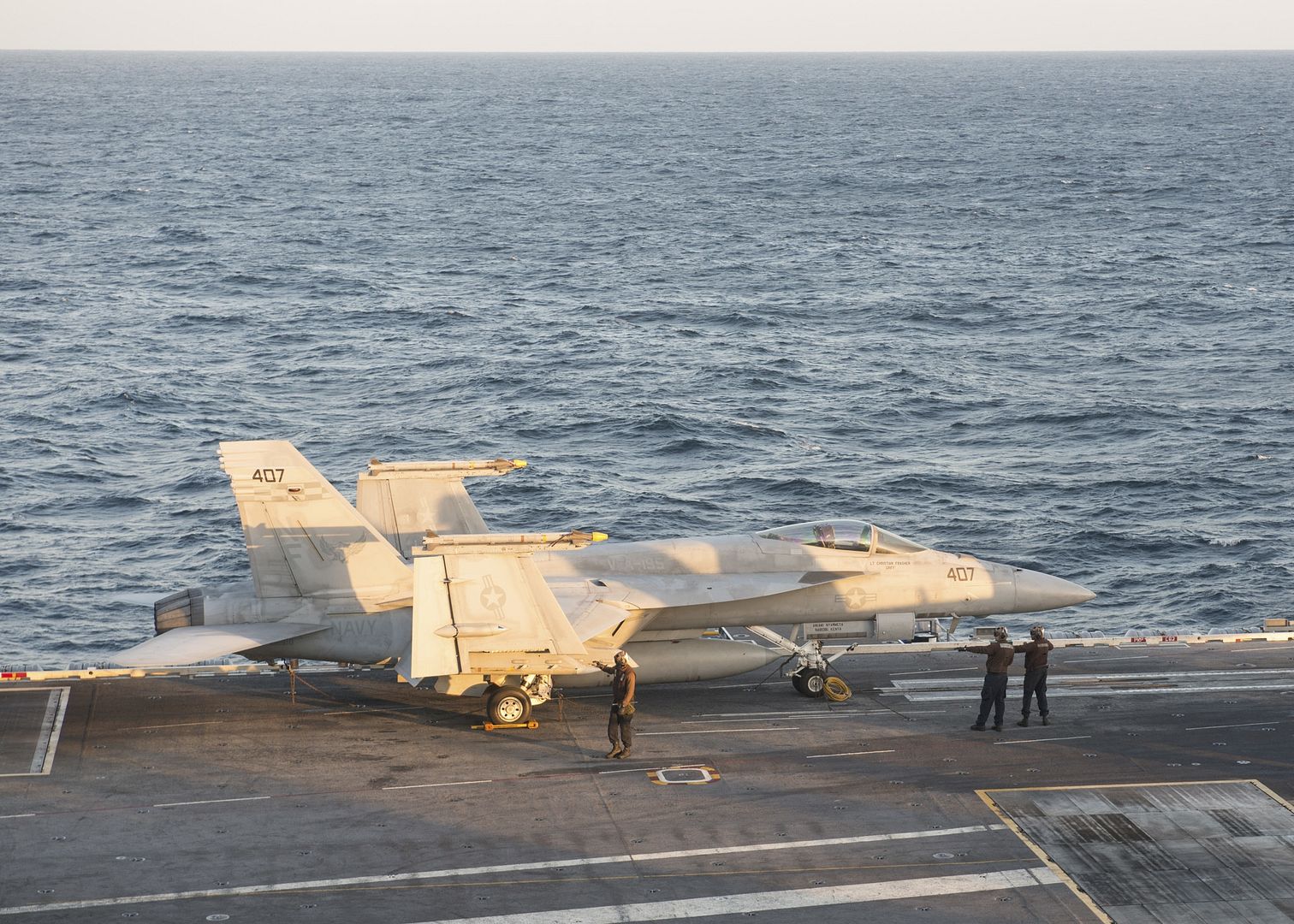
A F-15C Eagle, piloted by 1st Lt. Johnathan Pavan from the 144th Fighter Wing out of Fresno, Calif., takes off from 5 Wing Goose Bay, Canada, while participating in exercise Vigilant Shield 16 Oct. 20, 2015. From Oct 15-26, approximately 700 members from the Canadian Armed Forces, the U.S. Air Force, U.S. Navy and the U.S. Air National Guard are deploying to Iqaluit, Nunavut, and 5 Wing Goose Bay, Newfoundland Labrador, for Vigilant Shield 16. (U.S. Air National Guard photo/Senior Master Sgt. Chris Drudge)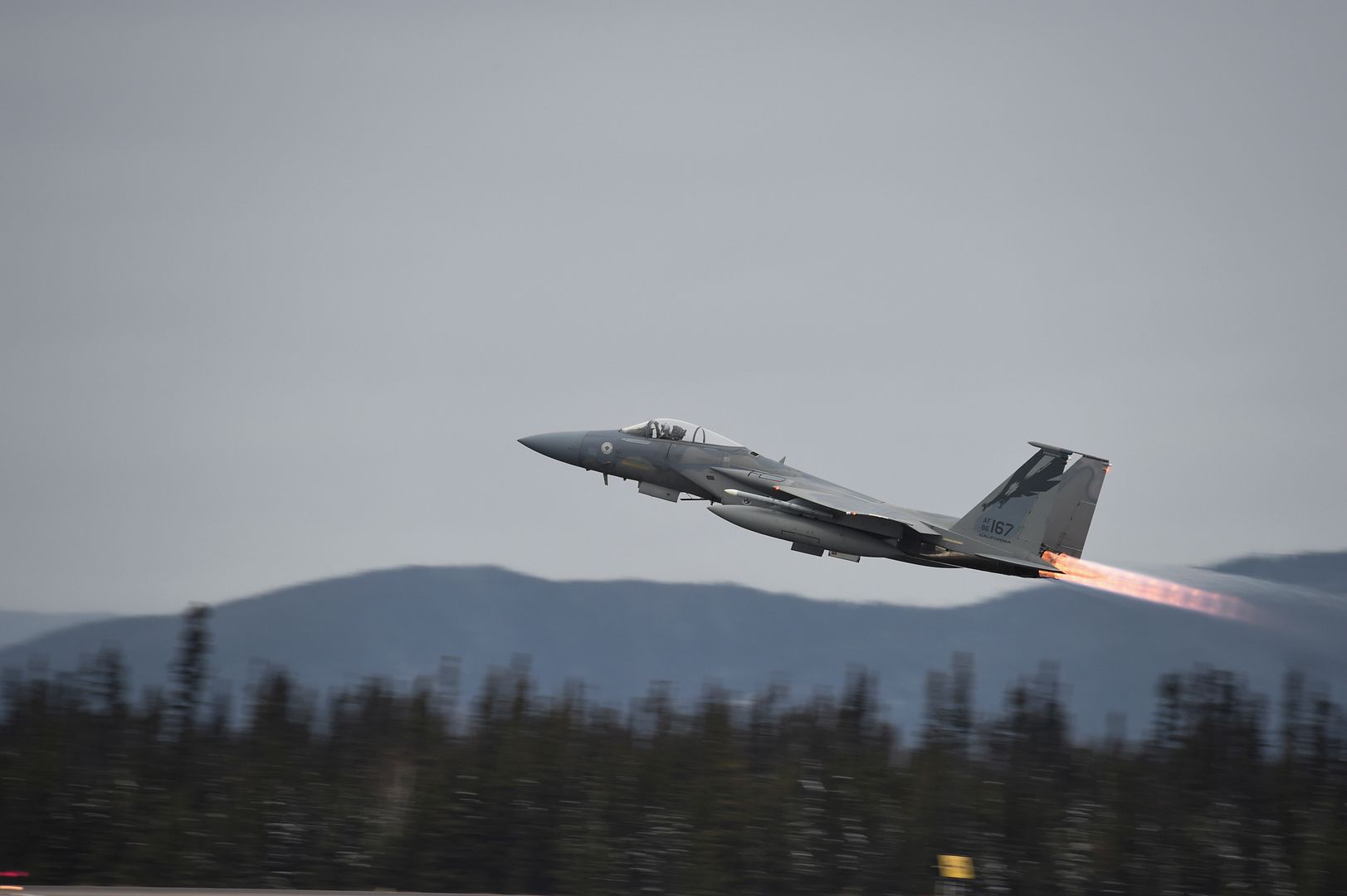
ROLLING MEADOWS, Ill., Oct. 25, 2015 (GLOBE NEWSWIRE) -- The Royal Australian Air Force (RAAF) has extended its contract with Northrop Grumman Corporation (NYSE:NOC) to provide logistics support for its F/A-18 Hornet Target Designation Systems, which use the AN/AAQ-28(V) LITENING pod.
The contract is the second four-year extension of the agreement between the RAAF and Northrop Grumman. Under the terms of the award, Northrop Grumman will continue to provide in-service support for the RAAF's LITENING targeting pods and data links at RAAF Base Williamtown and RAAF Base Tindal.
"This extension strengthens the Northrop Grumman-RAAF partnership and our company's long-term commitment to the Commonwealth," said Ian Irving, chief executive, Northrop Grumman Australia. "In addition to the support award, several enhancements have recently been authorized for the Hornet Target Designation System to improve tactical effectiveness. These may reduce costs by aligning the RAAF's pod configuration with that of U.S. forces."
Northrop Grumman has delivered more than 700 LITENING pods to customers worldwide. The systems have accumulated more than 2 million operating hours.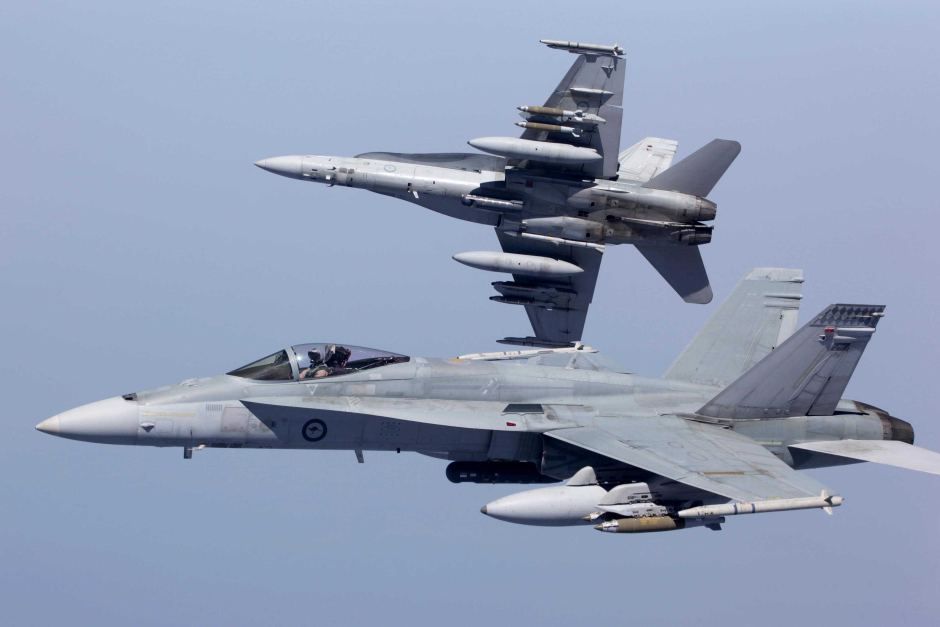
Post a reply
- Go to Previous topic
- Go to Next topic
- Go to Welcome
- Go to Introduce Yourself
- Go to General Discussion
- Go to Screenshots, Images and Videos
- Go to Off topic
- Go to Works in Progress
- Go to Skinning Tips / Tutorials
- Go to Skin Requests
- Go to IJAAF Library
- Go to Luftwaffe Library
- Go to RAF Library
- Go to USAAF / USN Library
- Go to Misc Library
- Go to The Ops Room
- Go to Made in Germany
- Go to Campaigns and Missions
- Go to Works in Progress
- Go to Juri's Air-Raid Shelter
- Go to Campaigns and Missions
- Go to Works in Progress
- Go to Skinpacks
- Go to External Projects Discussion
- Go to Books & Resources
